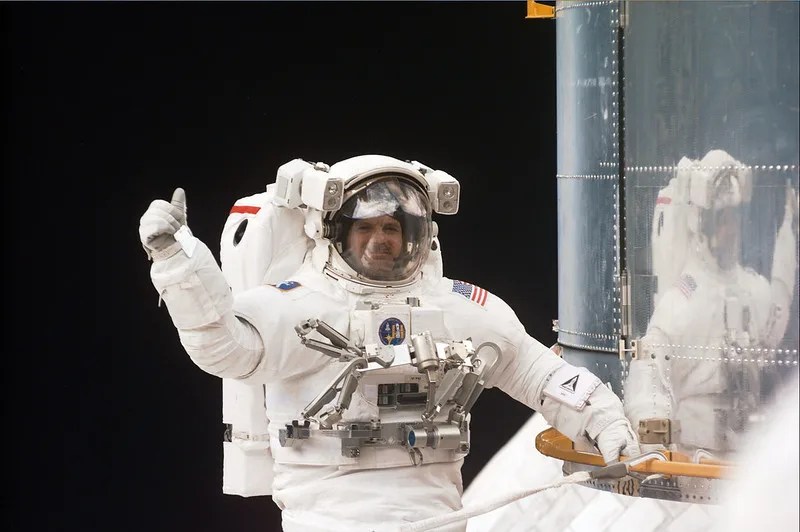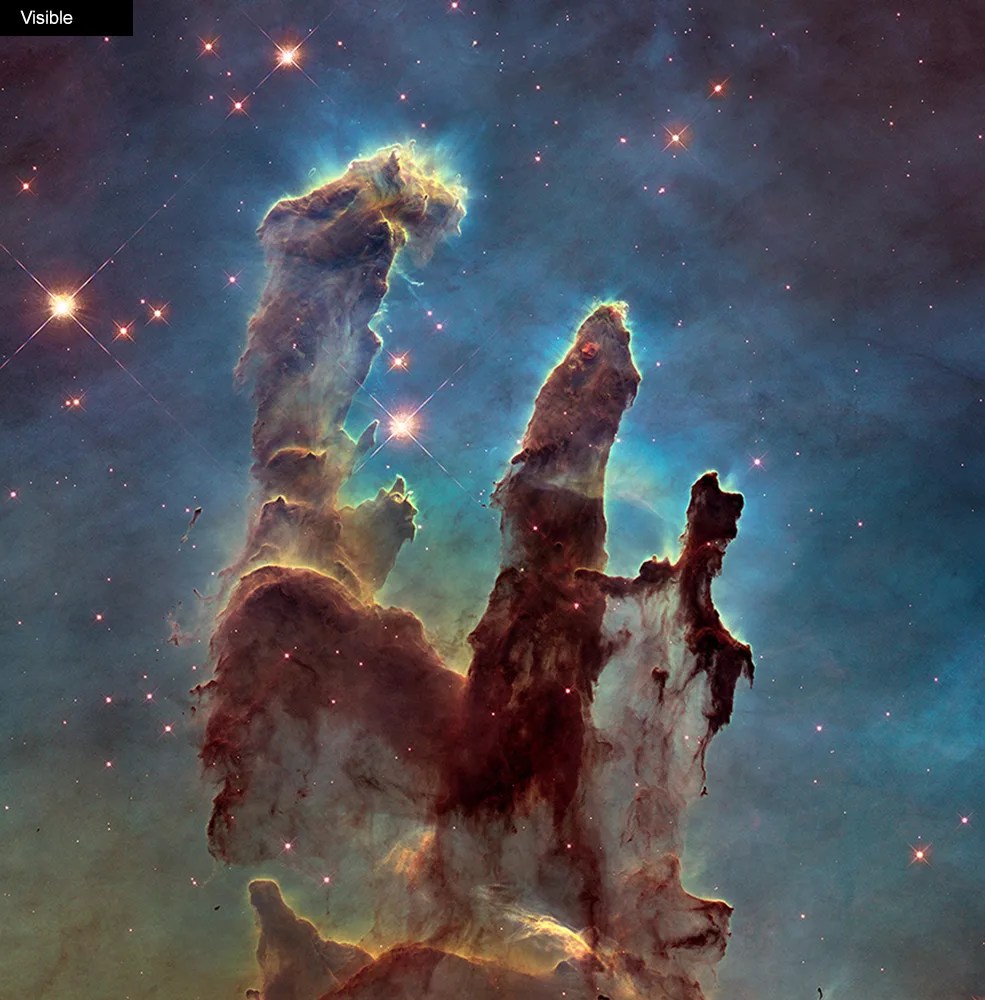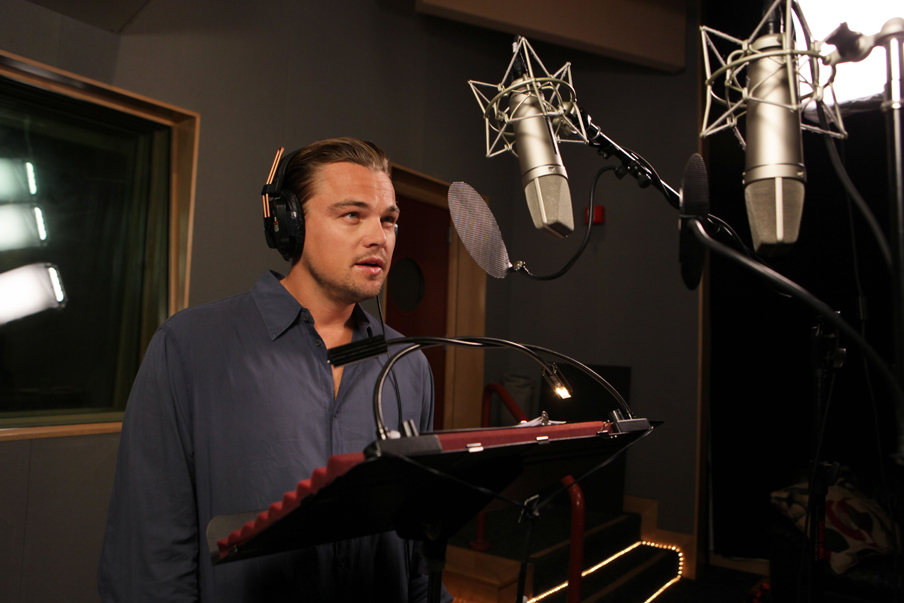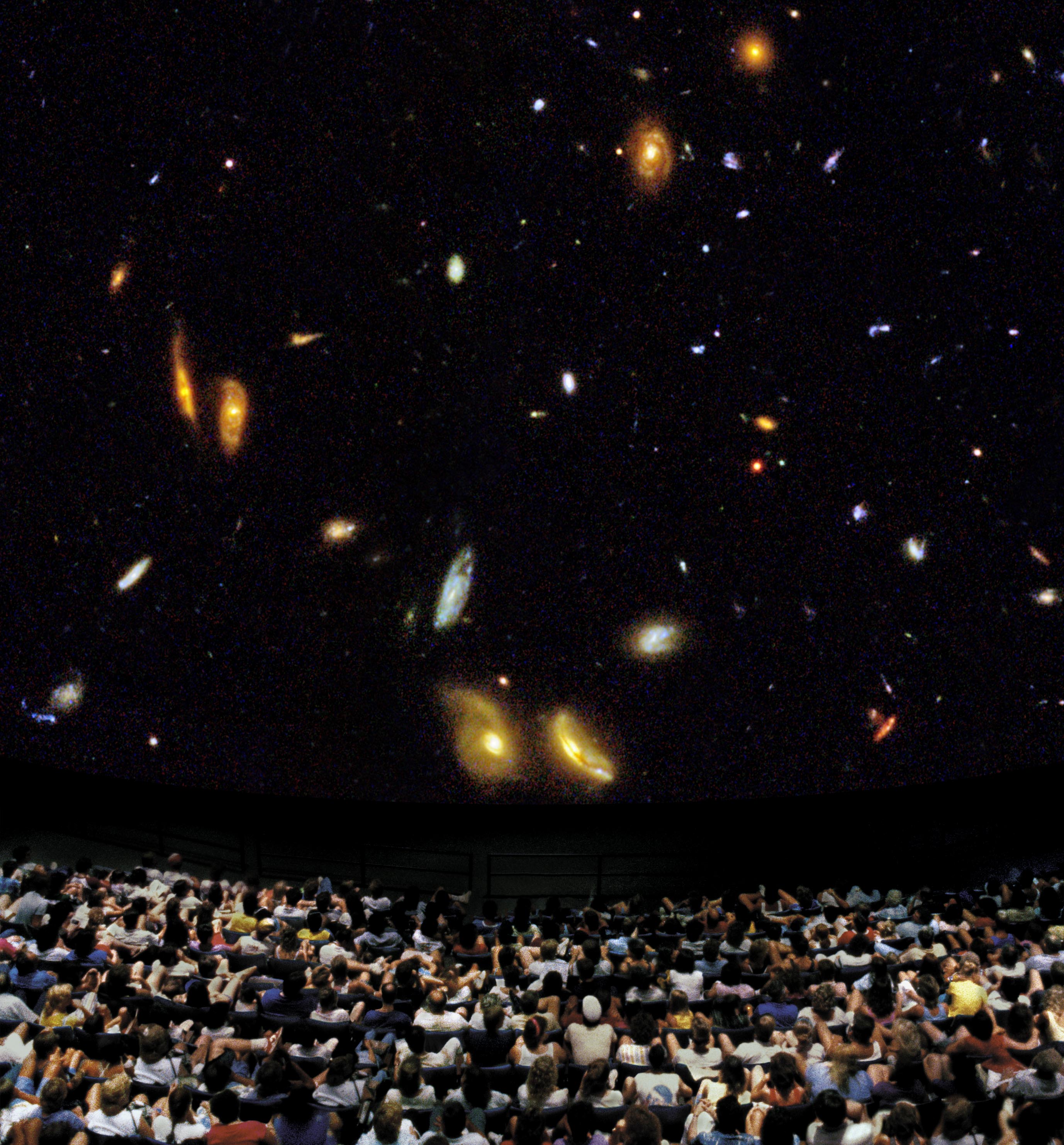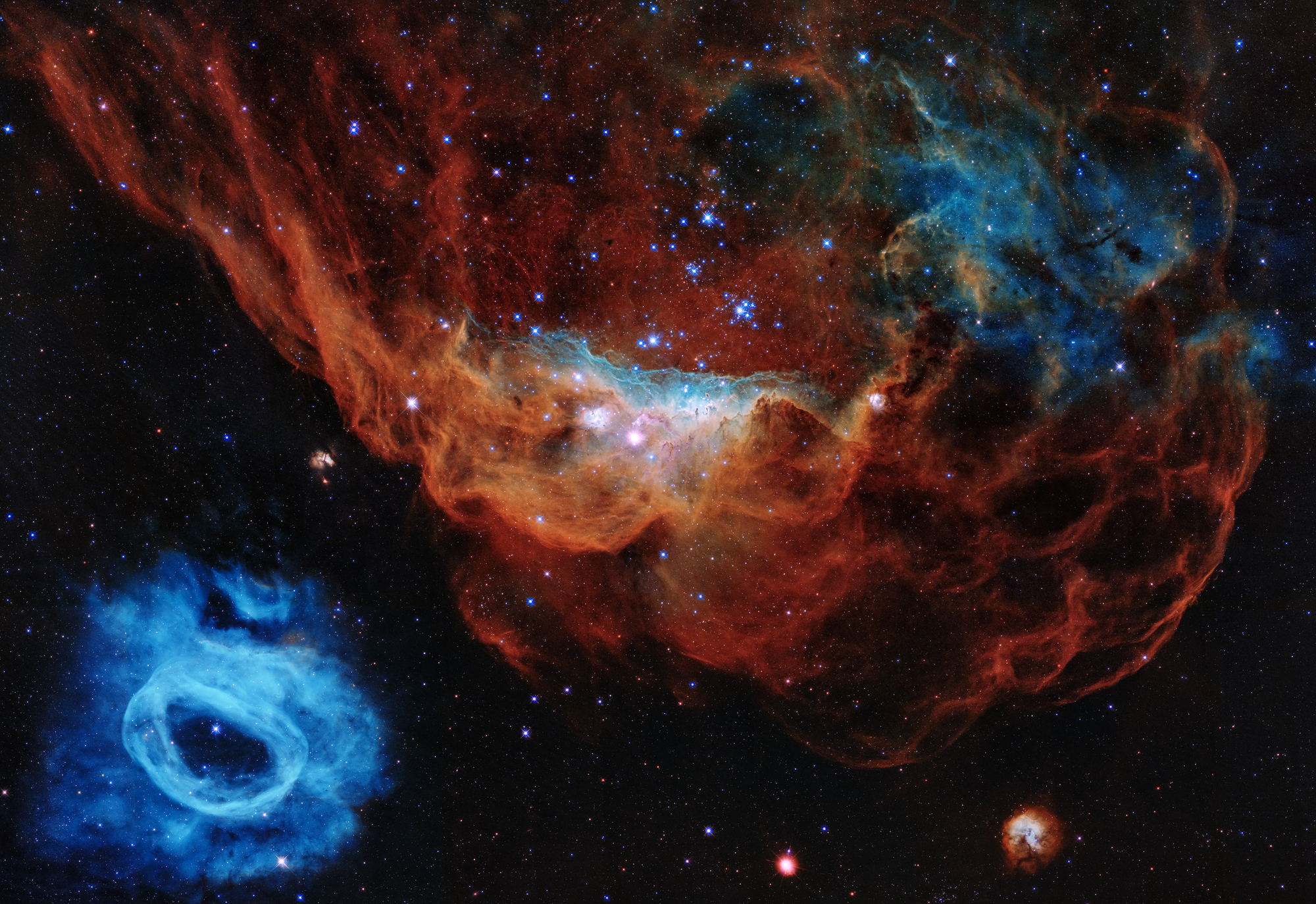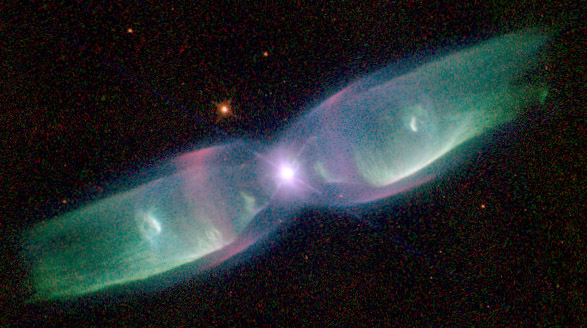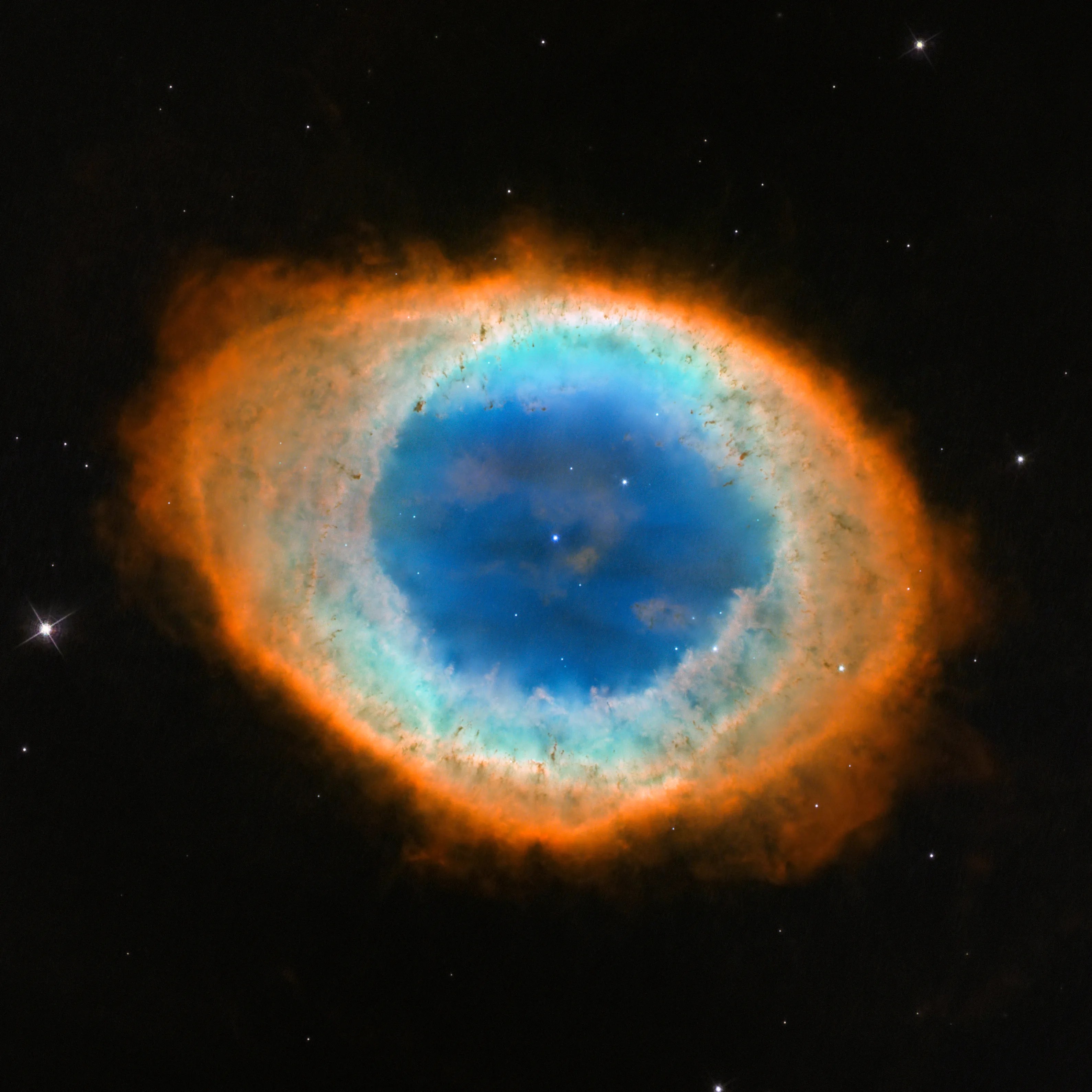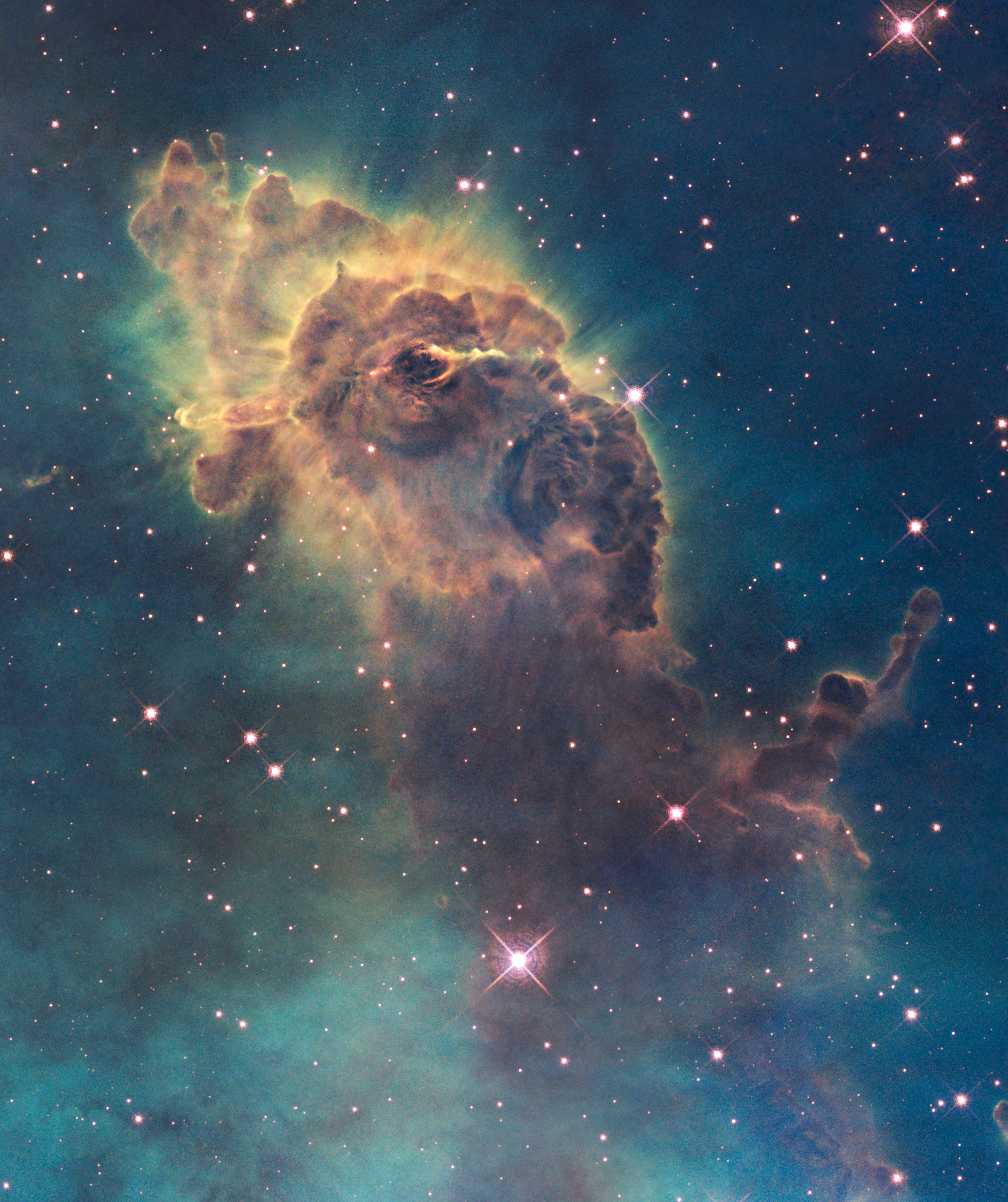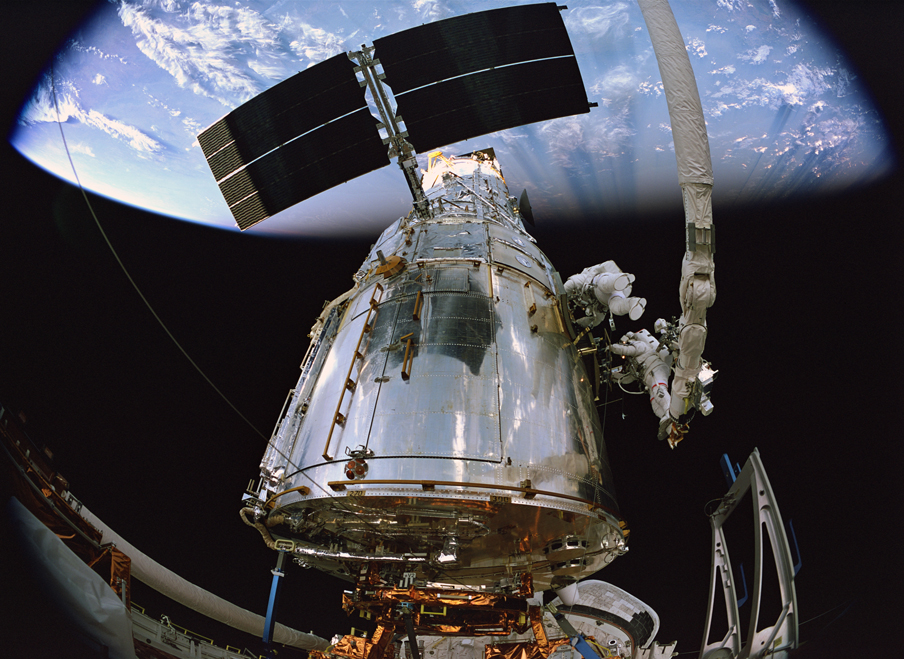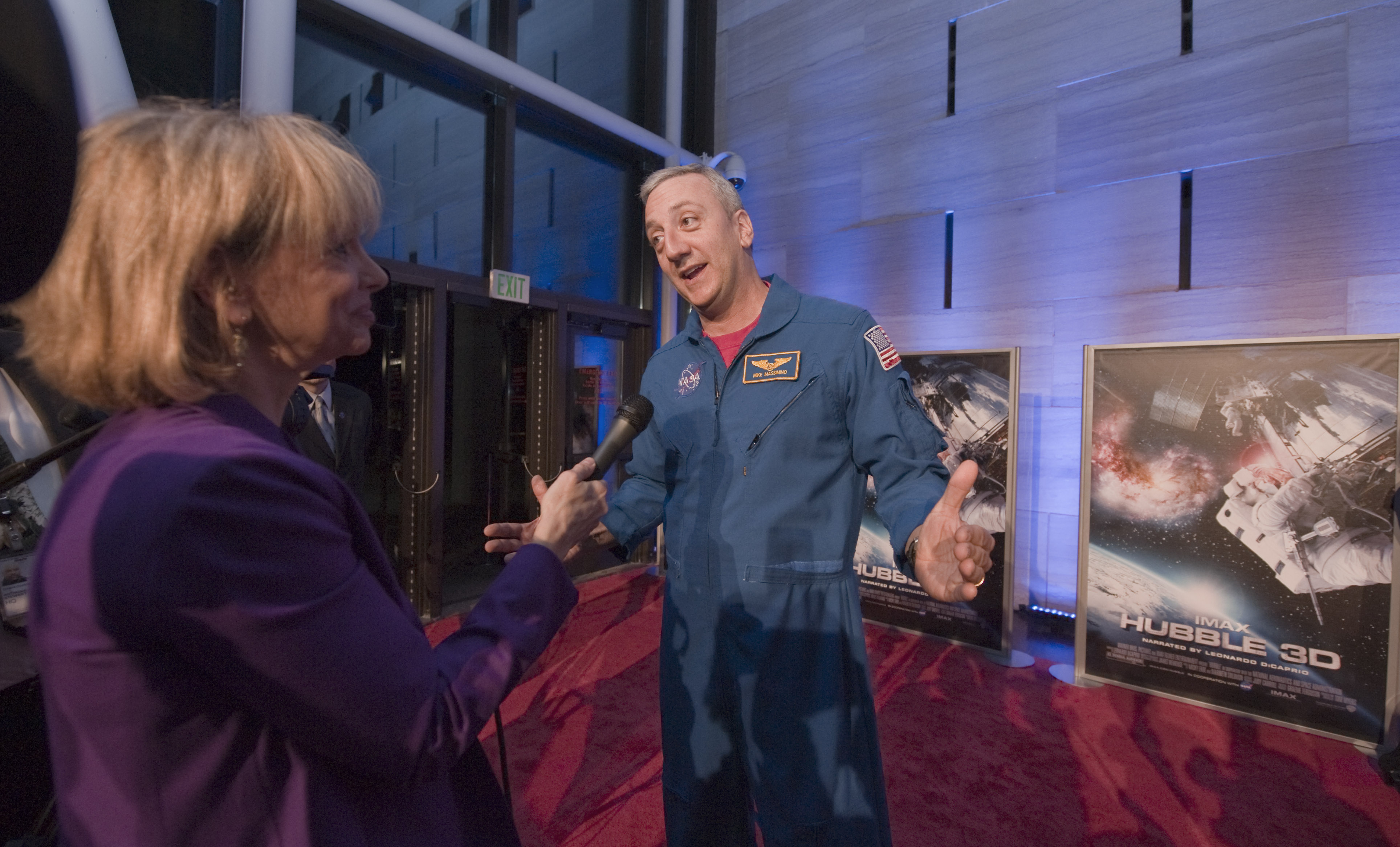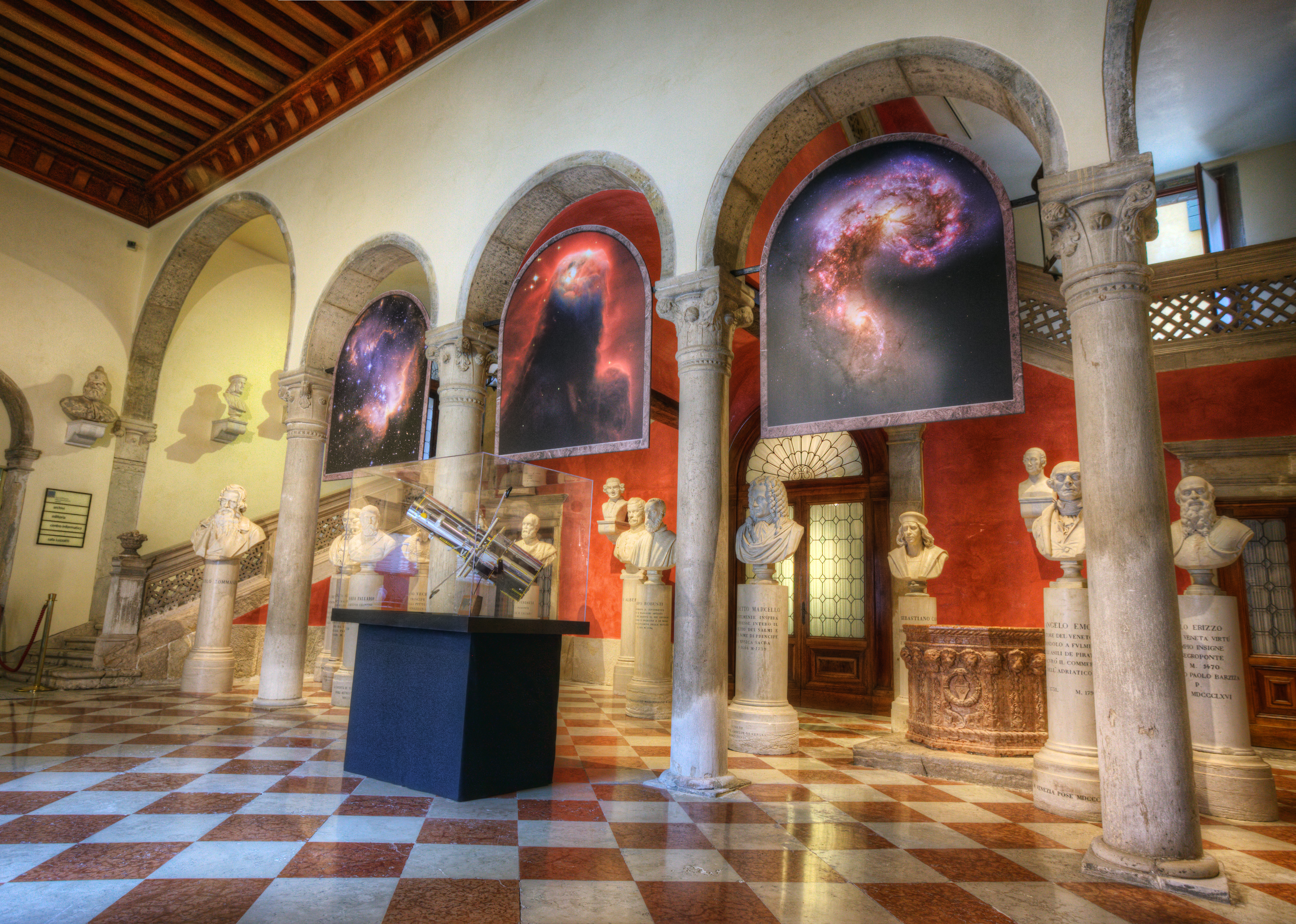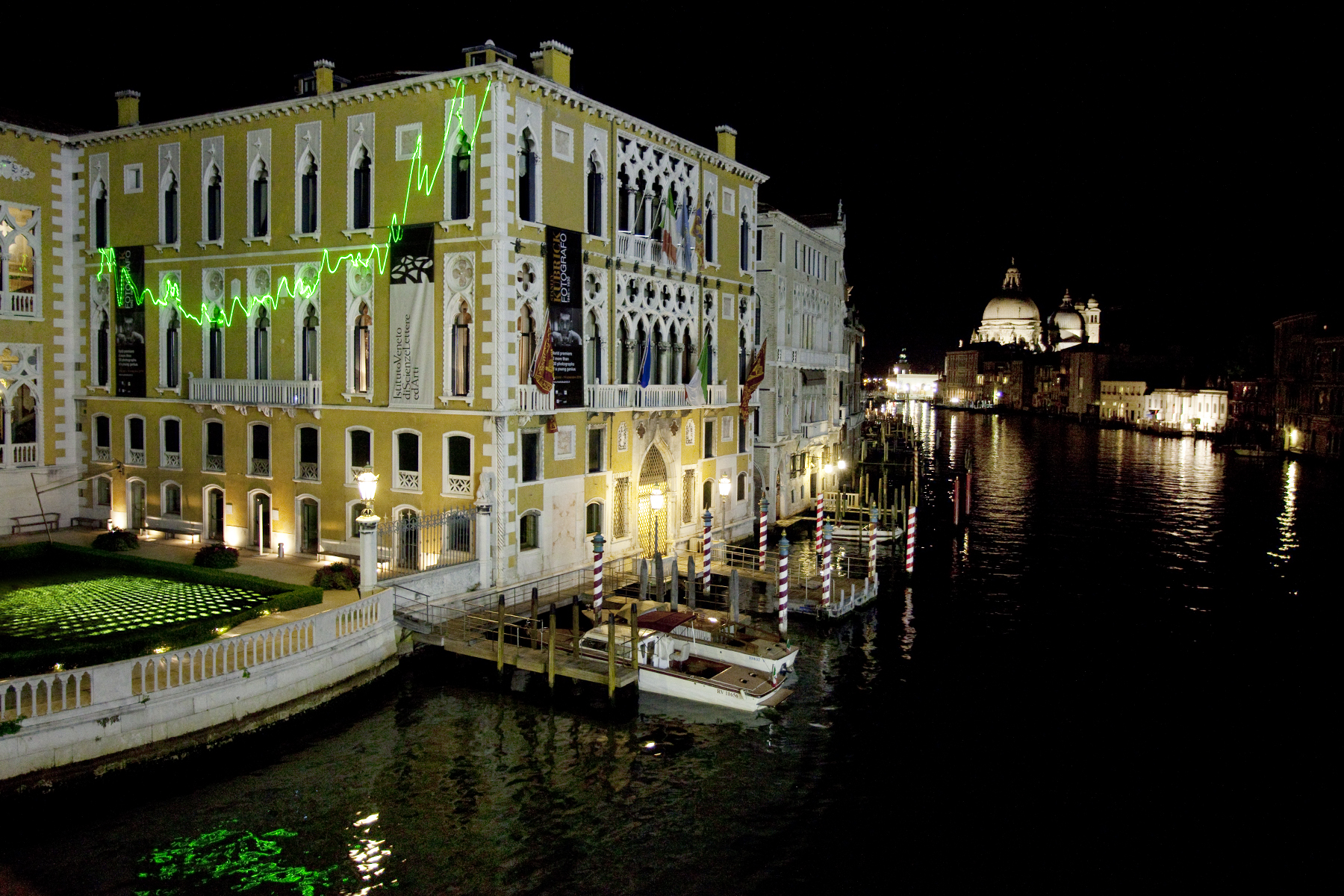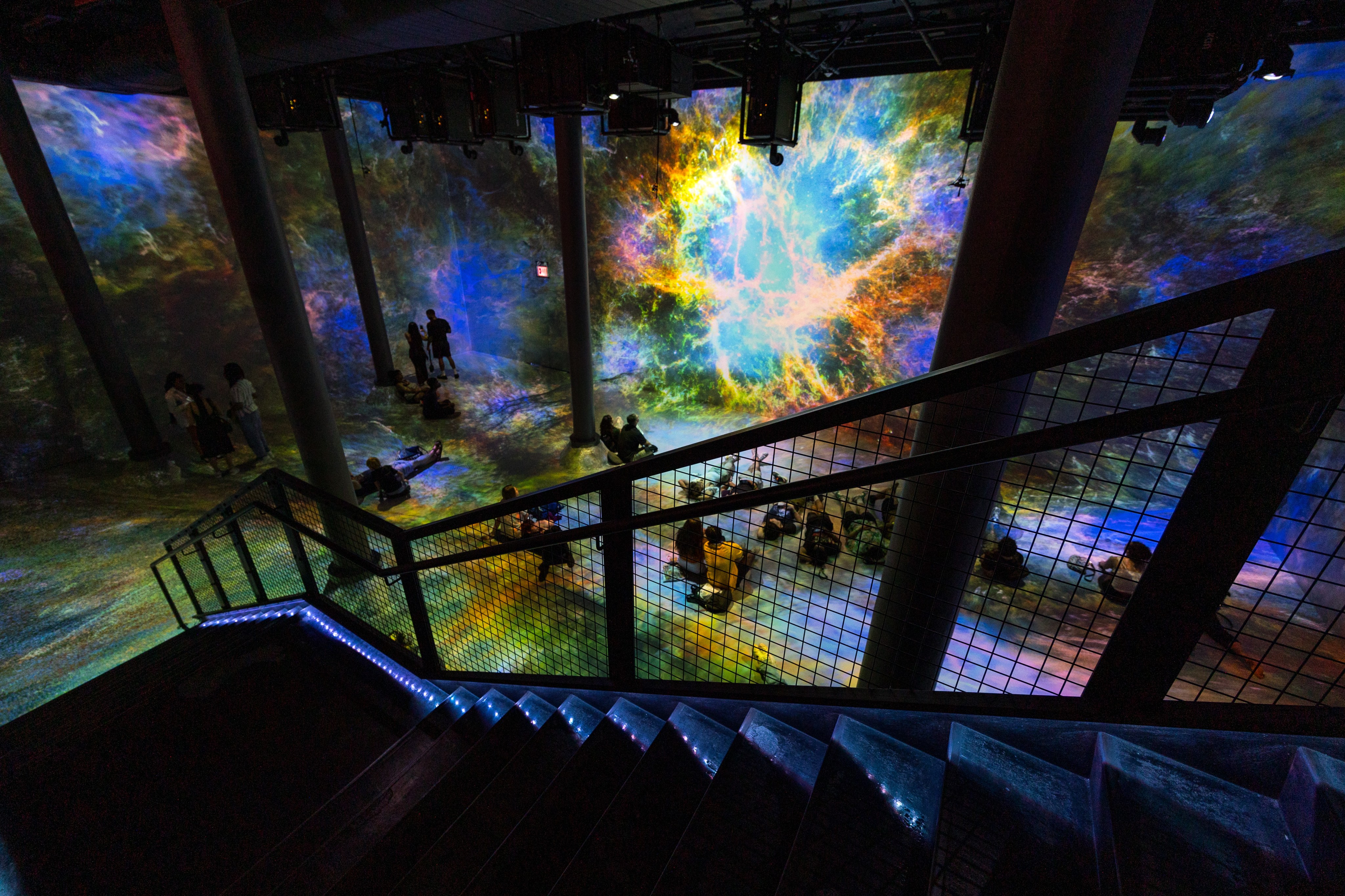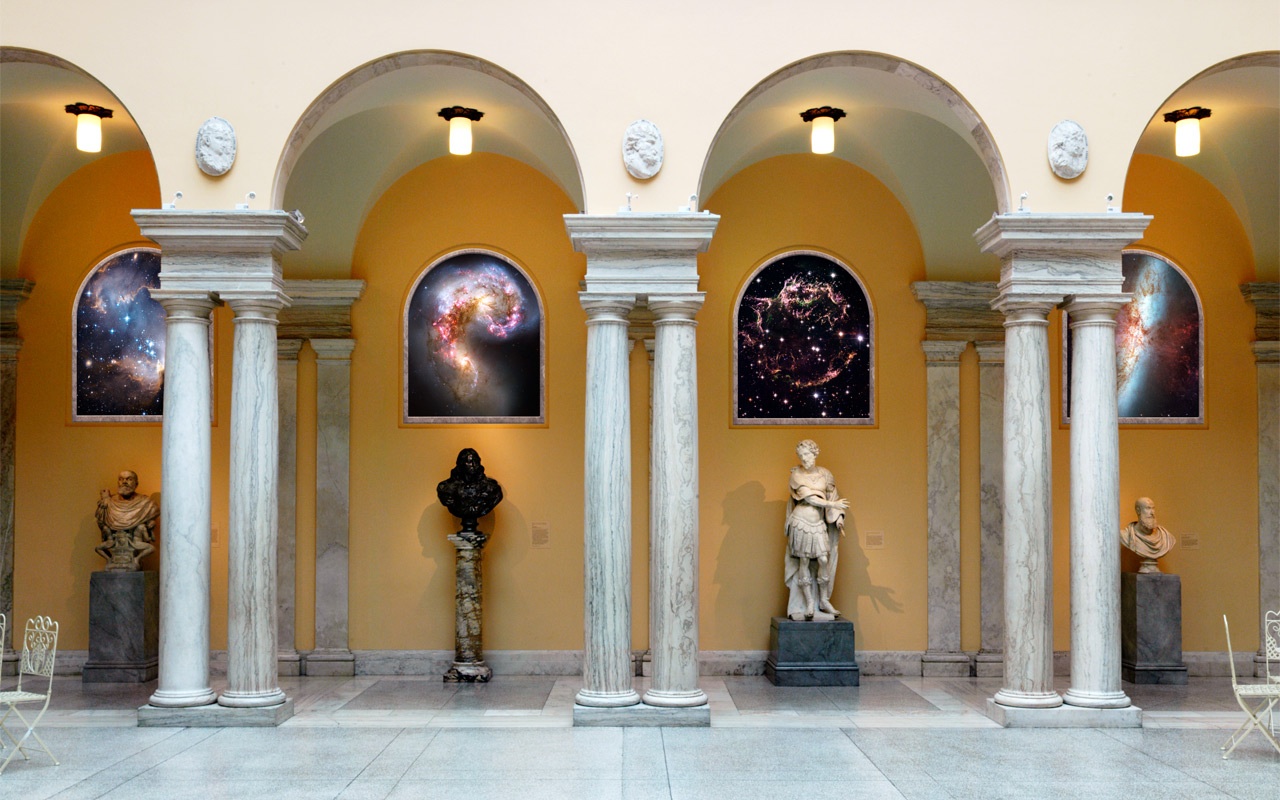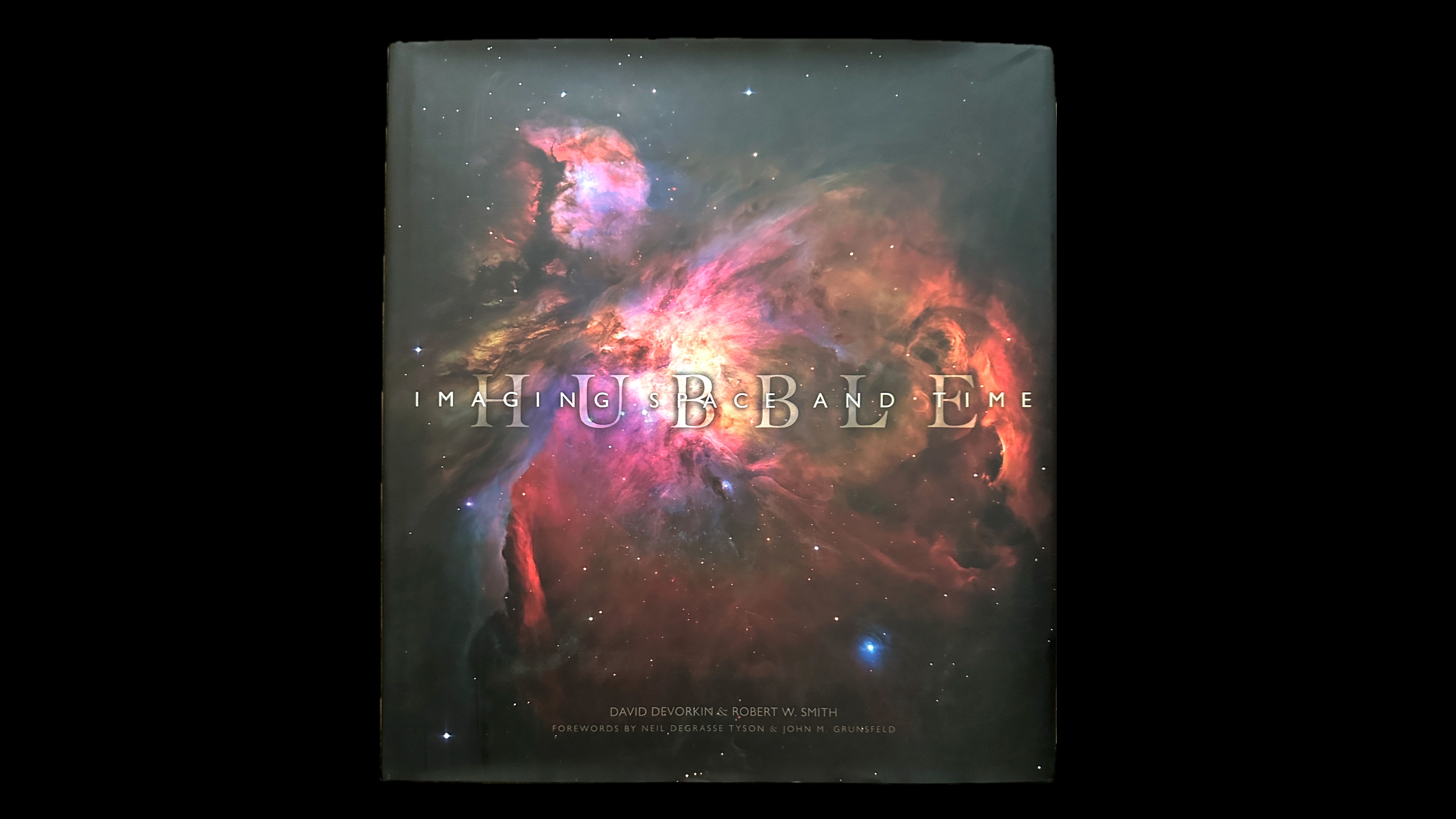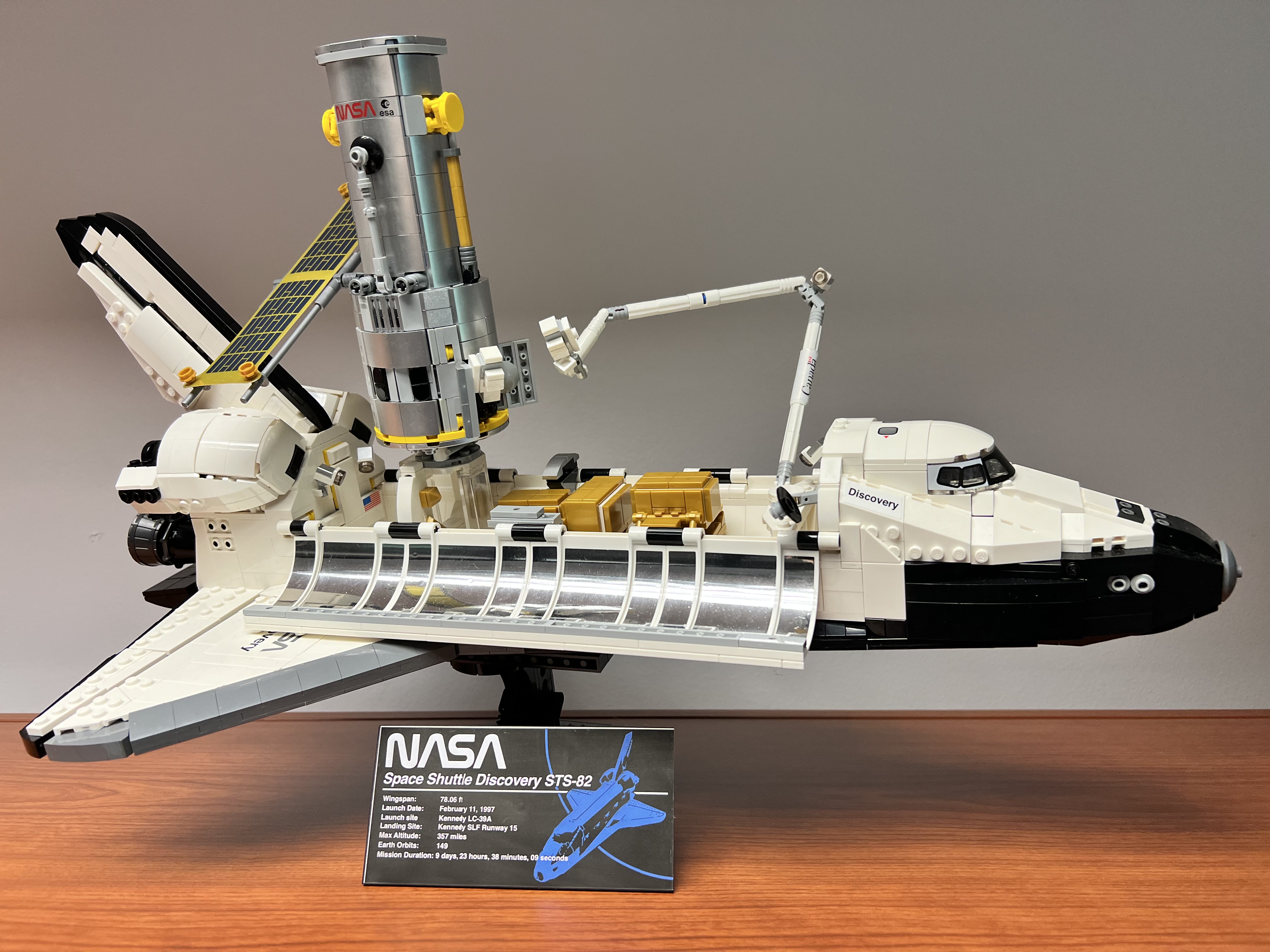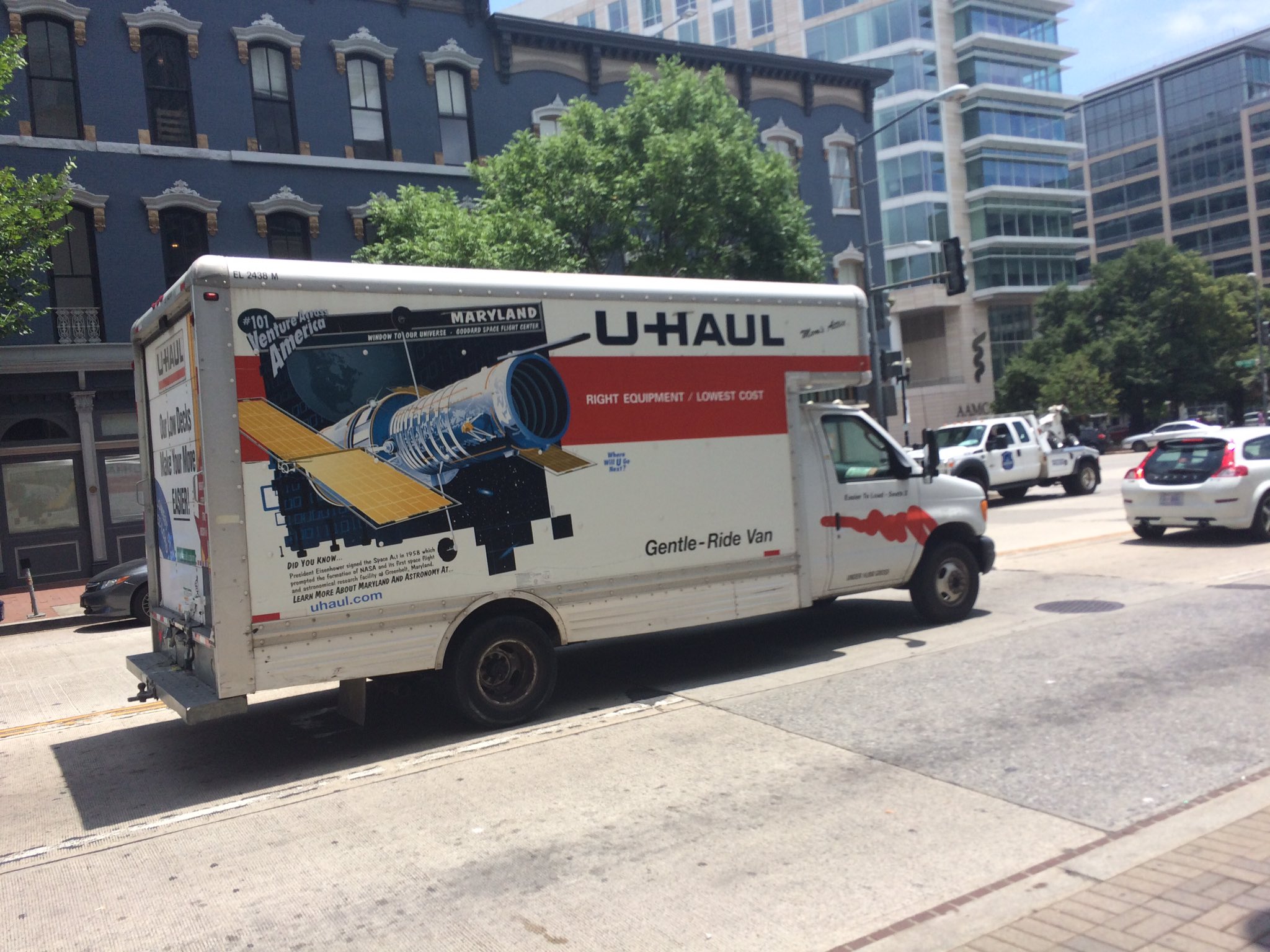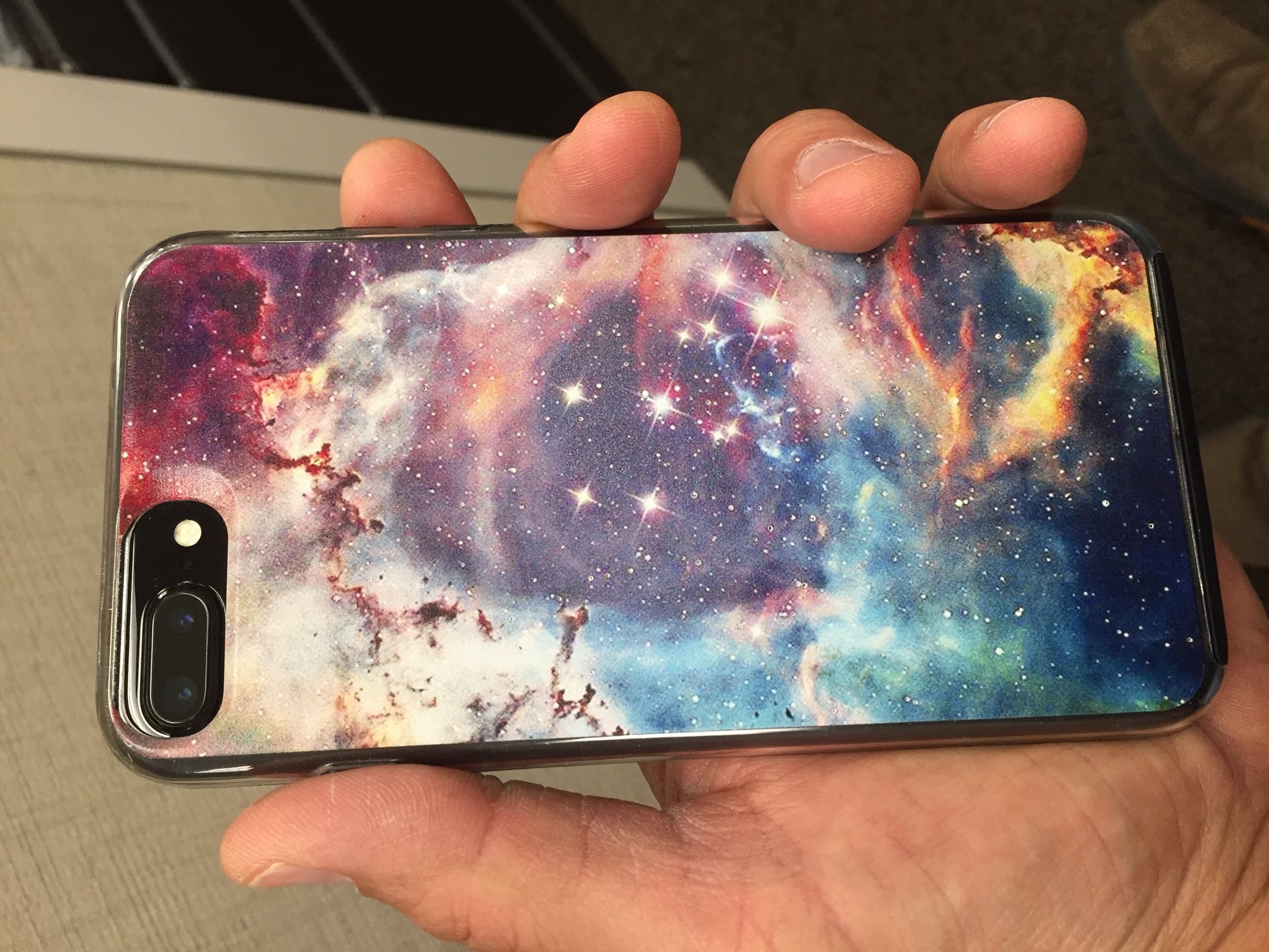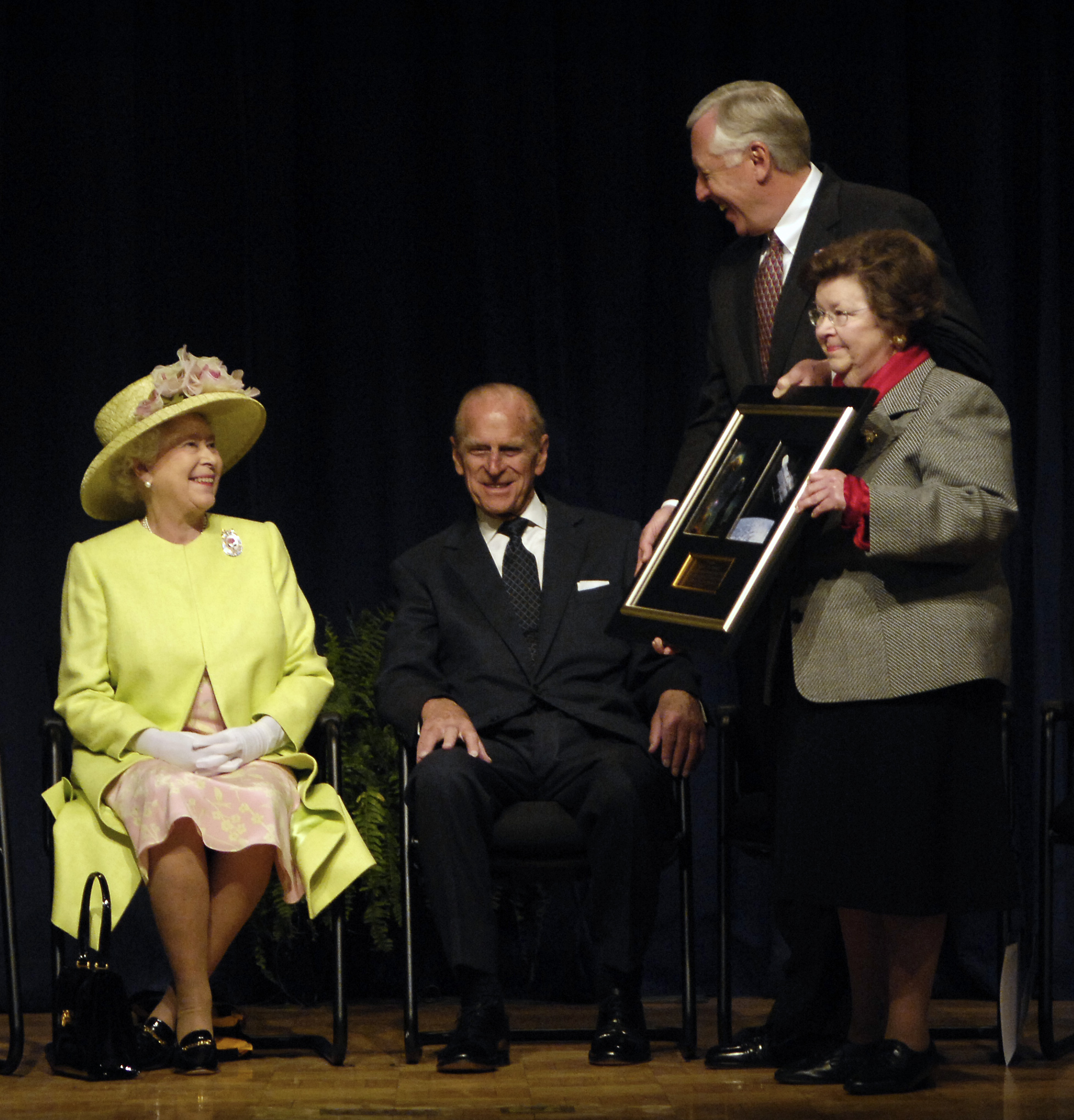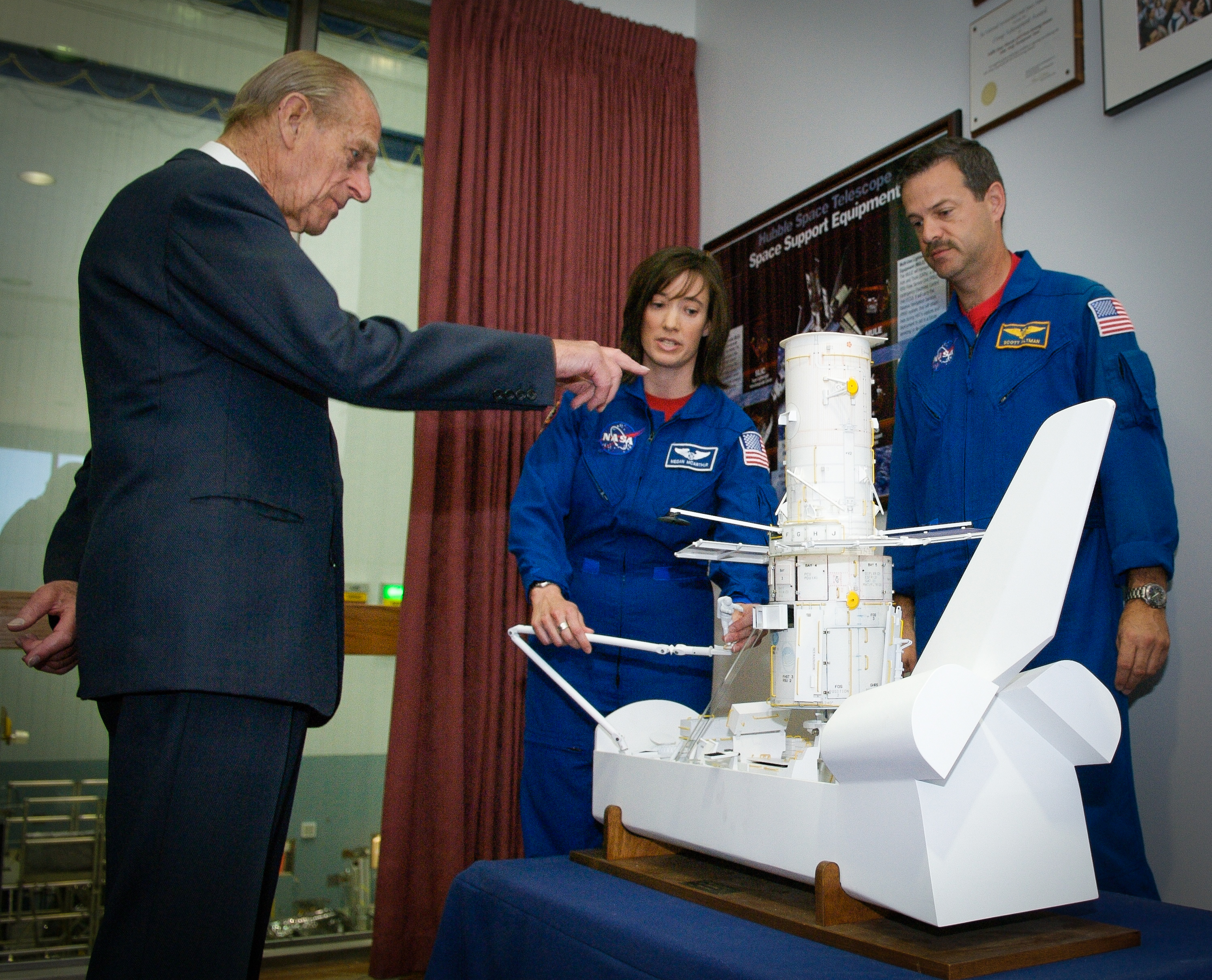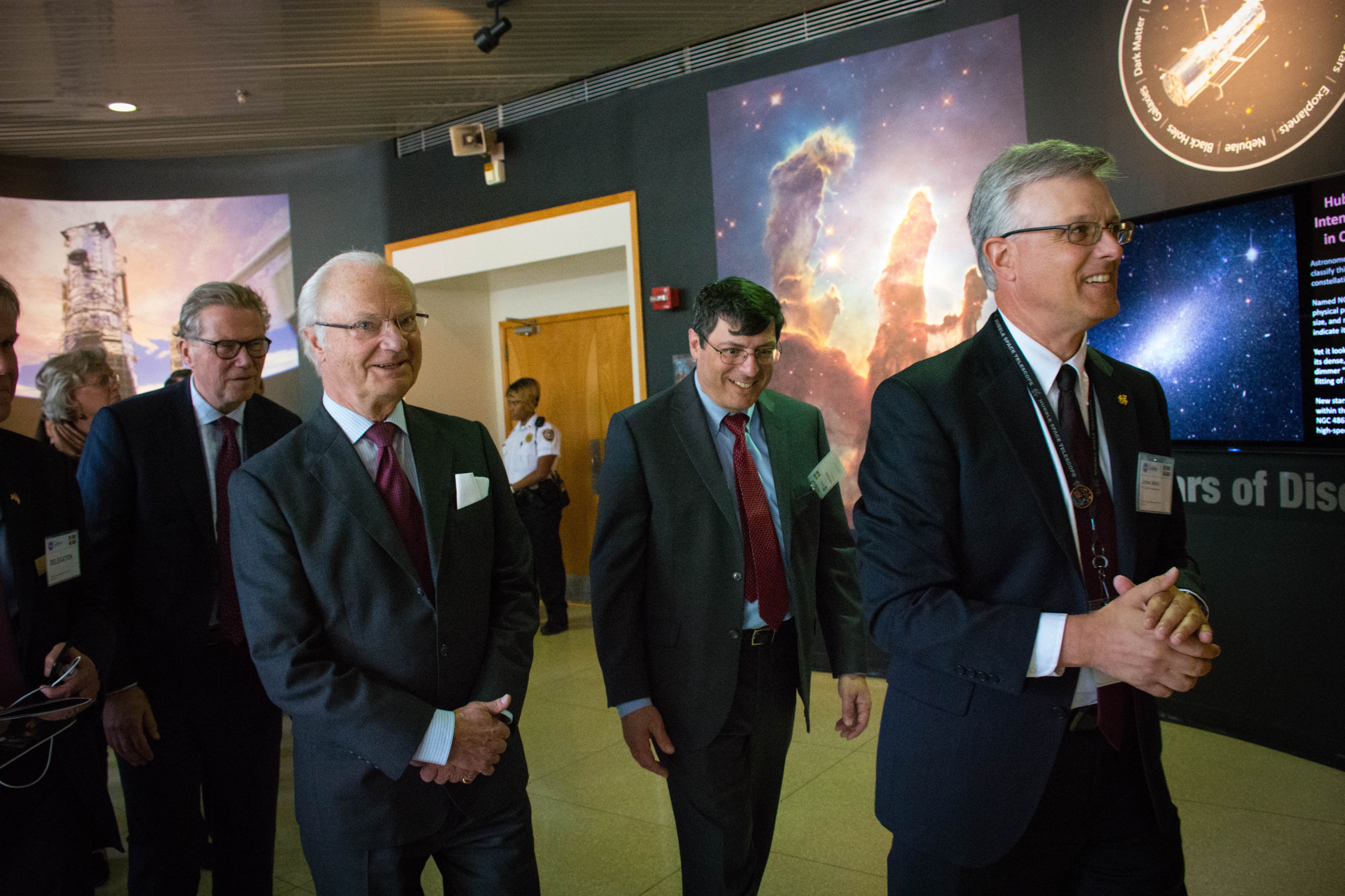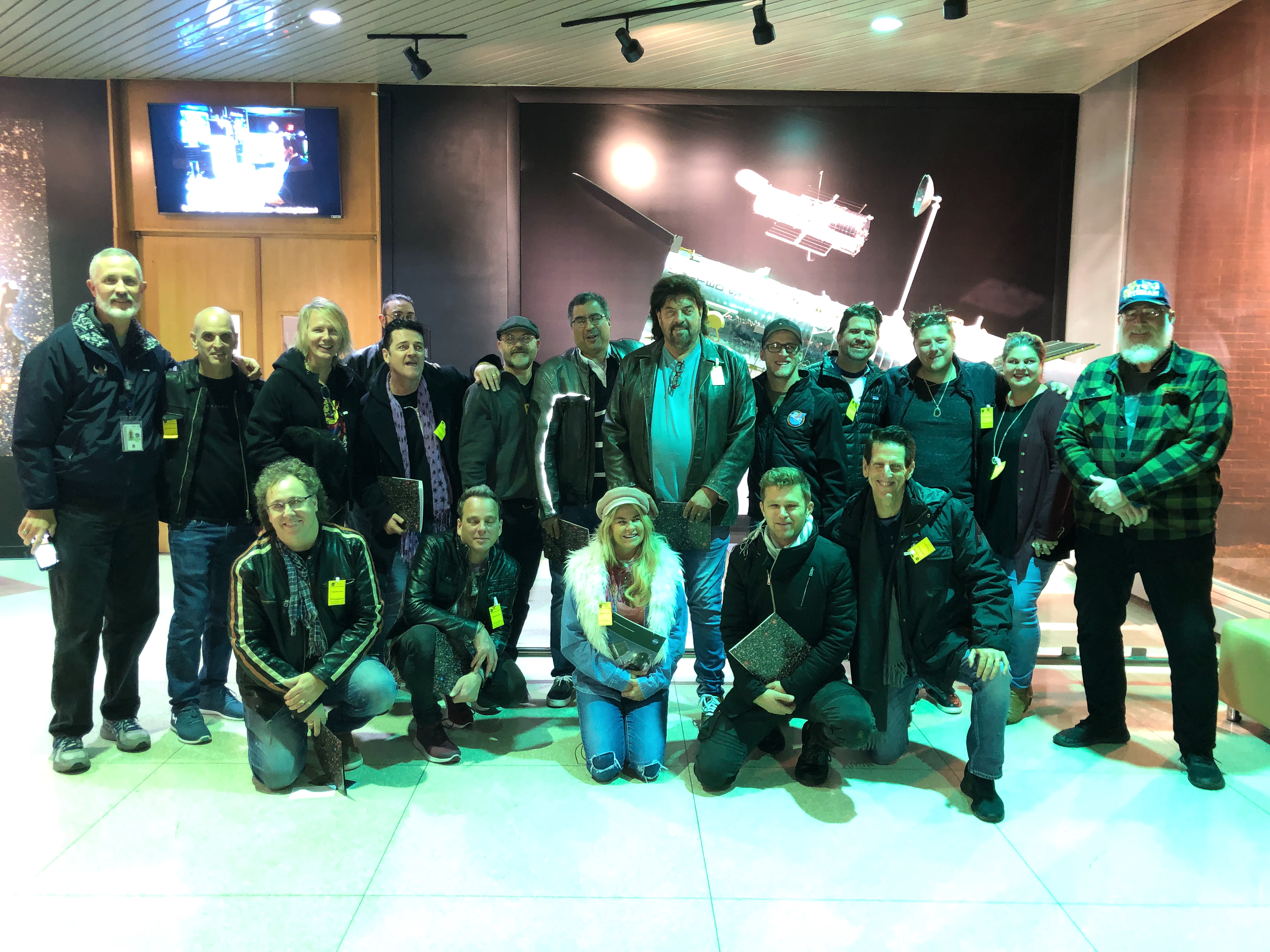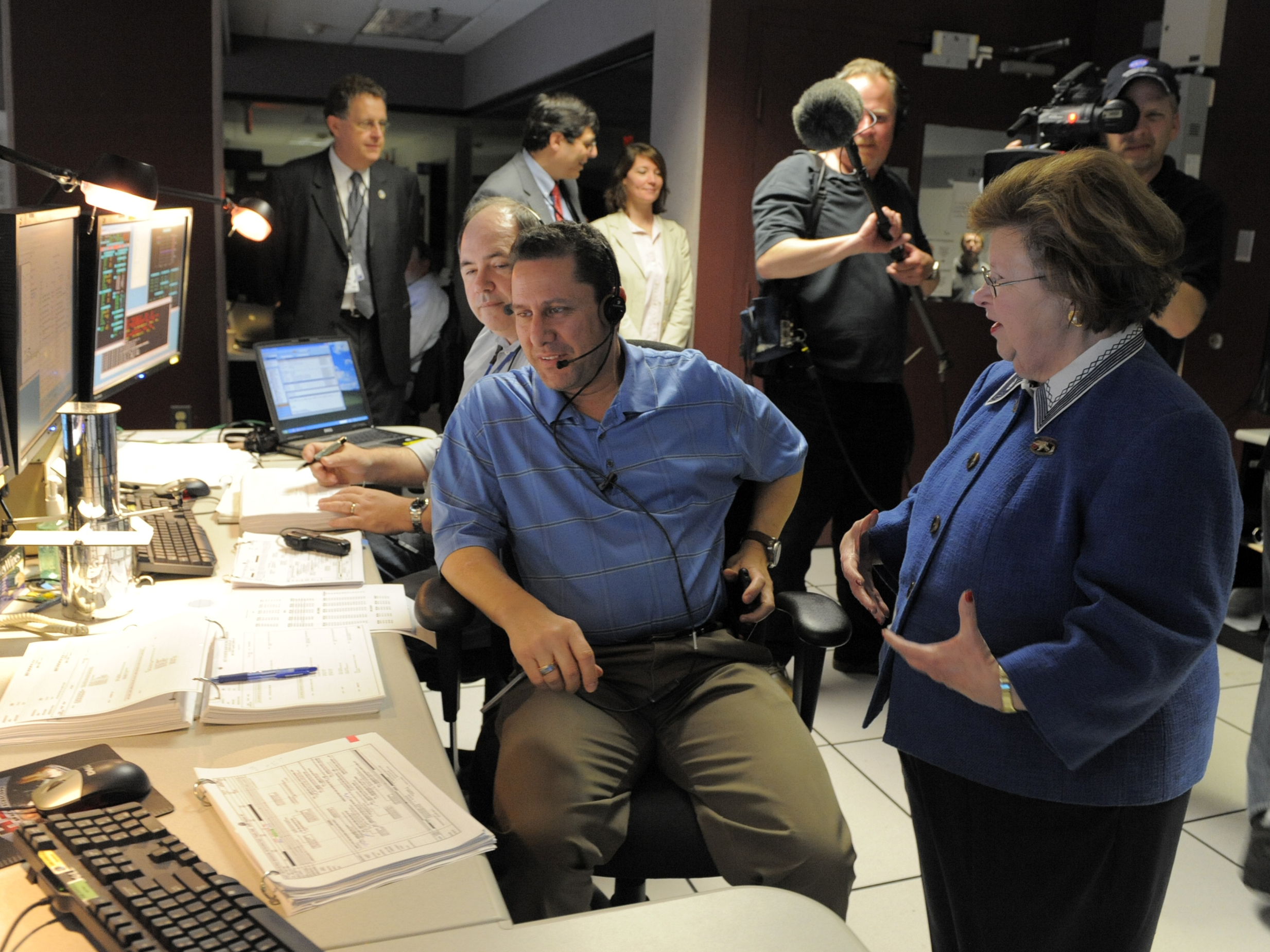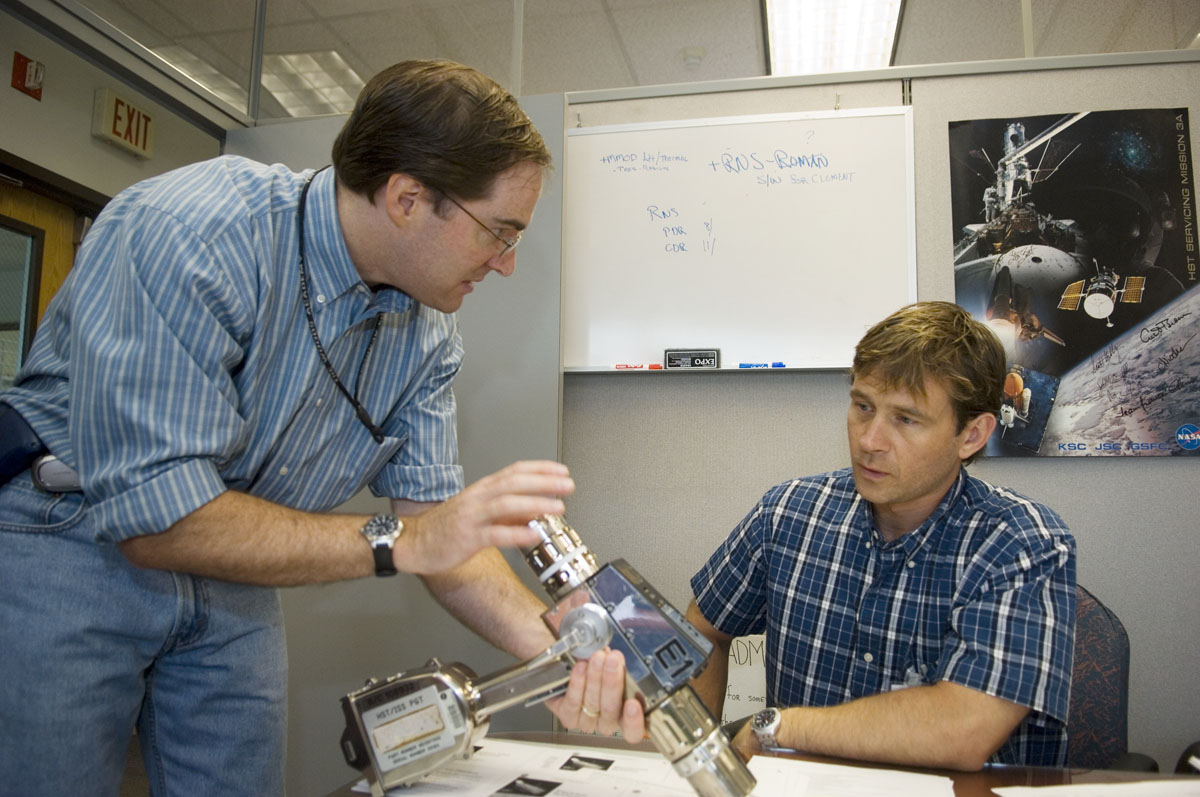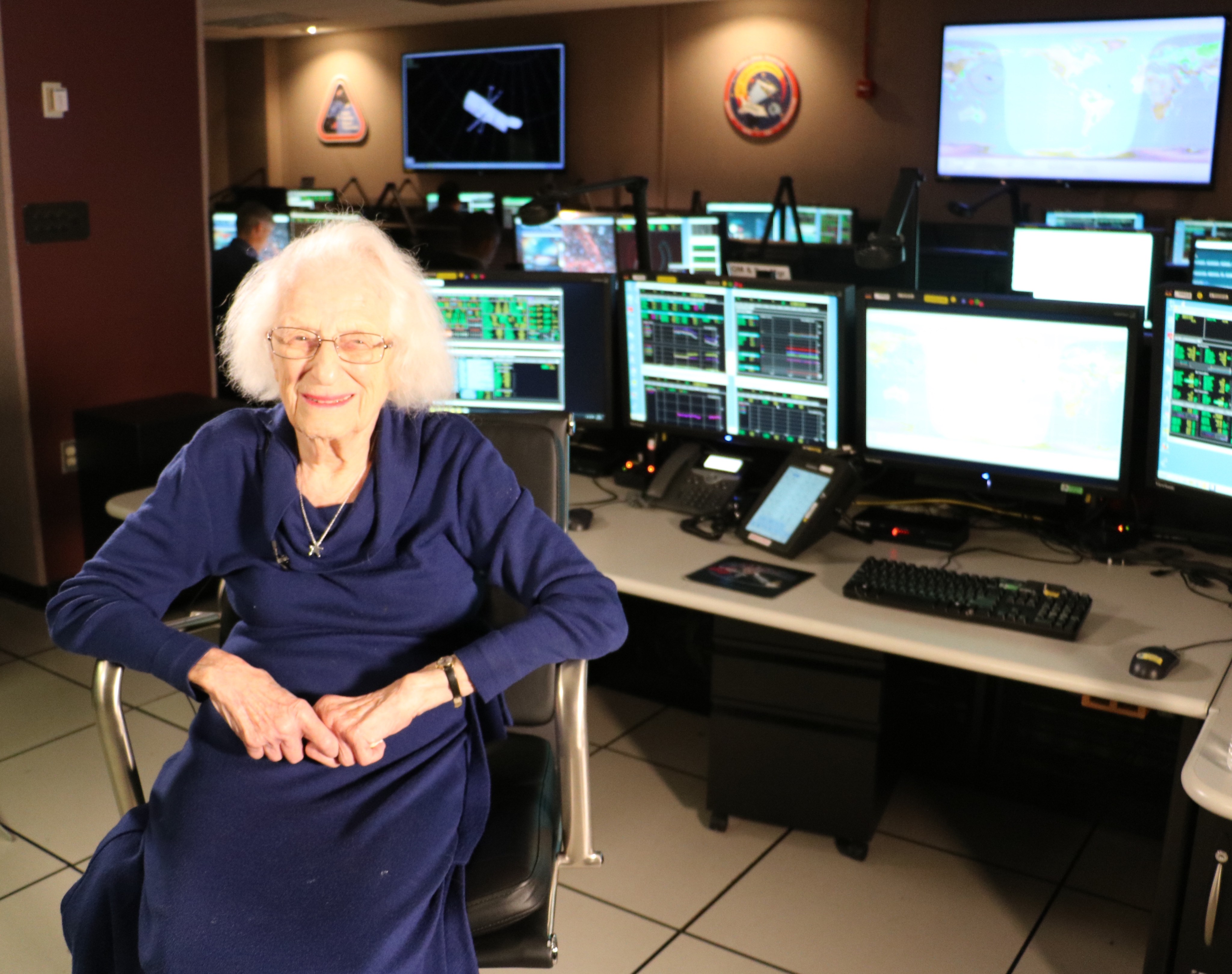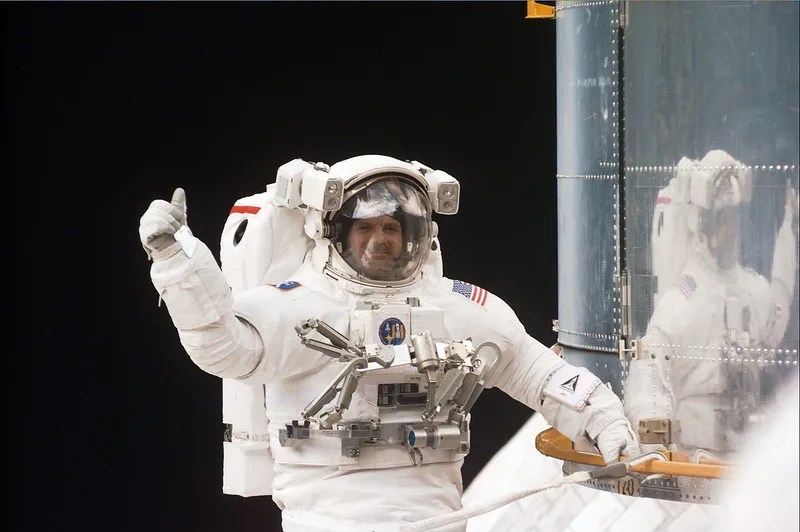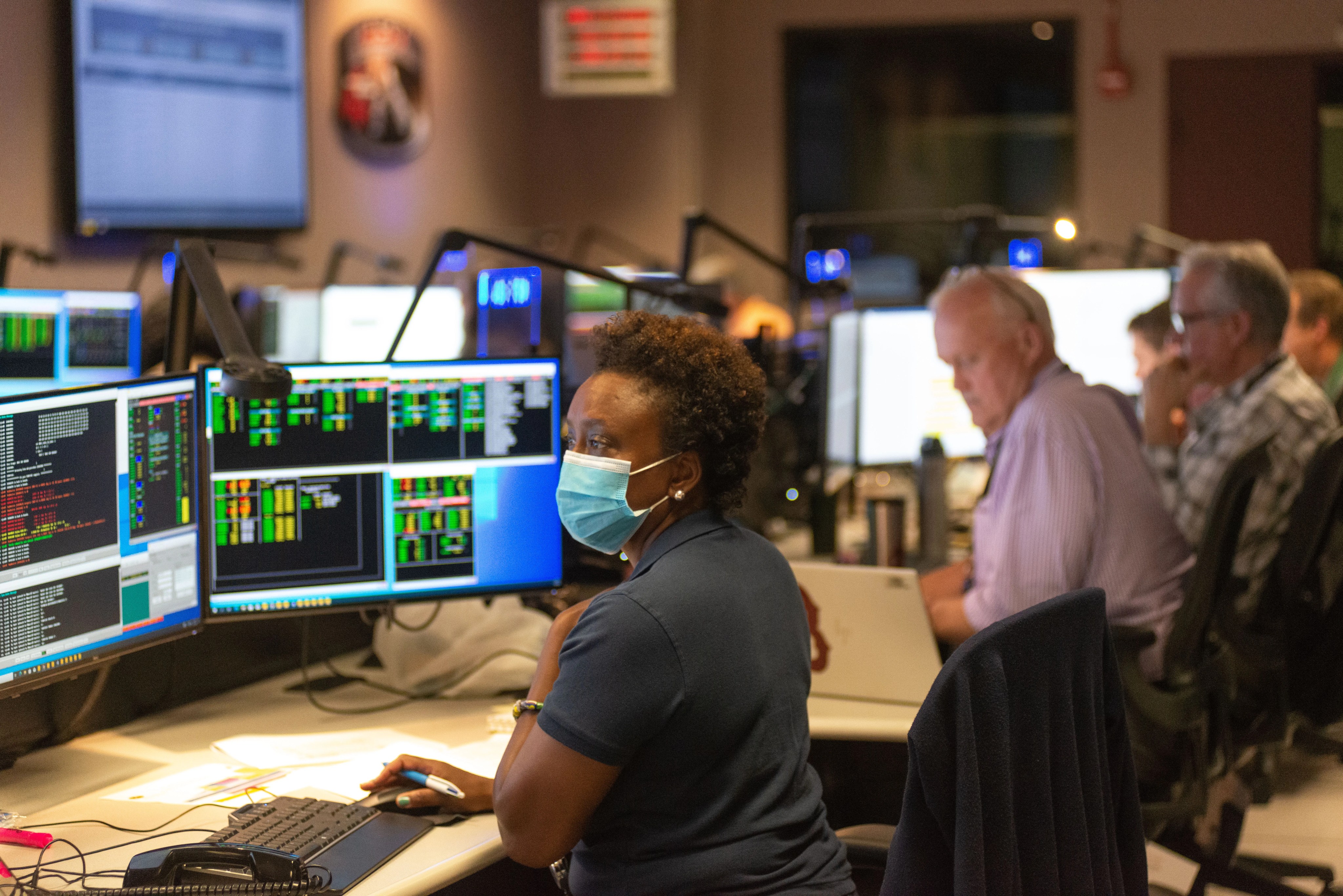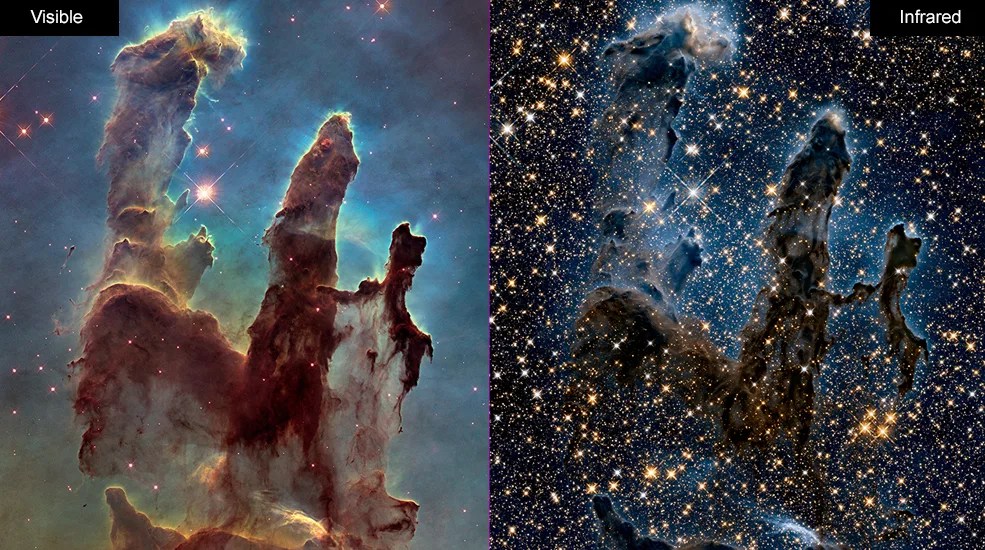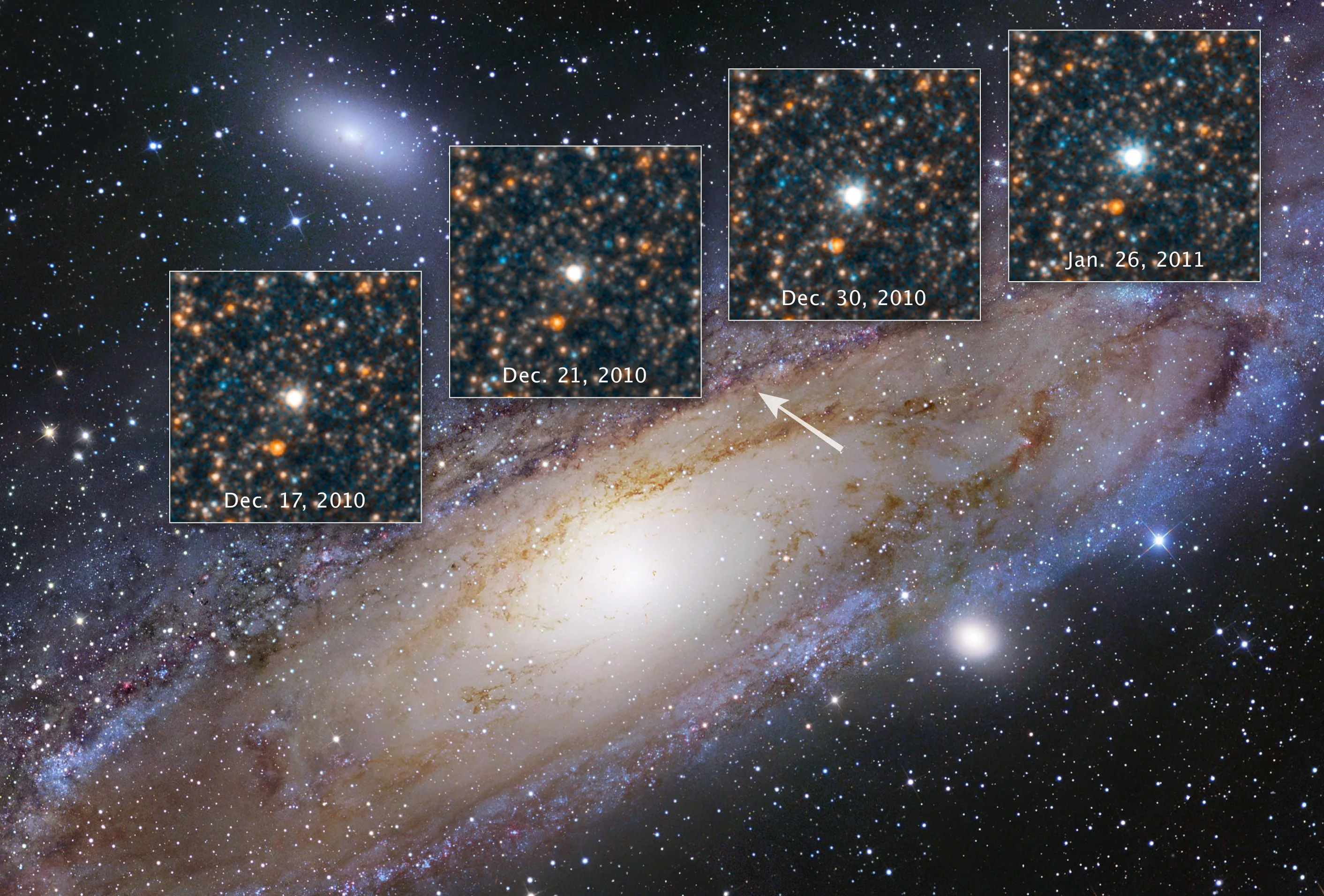The World With Hubble
For over three decades, Hubble has been a part of our lives. It's hard to imagine a time when we didn't have the telescope's images to guide our imaginations through the cosmos. Ever since the telescope rocketed to the forefront of astronomical discovery with the dramatic mission to correct its blurred vision, Hubble and its observations have become cultural icons. Hubble's likeness and its images can be found on stamps, clothing, tattoos, art, album covers, and even in Hollywood blockbuster movies. Below are just a sampling of the hundreds of instances where Hubble has been used in pop culture.
Television and Movies
Hubble images have helped define the way people think of the universe, and they or the telescope itself often show up in the background of popular Hollywood television shows and movies. Hubble's view of the Eagle Nebula appeared in Amazon's streaming show "Good Omens" and its 30th anniversary science image of the Cosmic Reef was used in the movie "The Adam Project." The telescope's likeness was seen at the beginning of the movie "Gravity" and in the first episode of the series "Space Force." TV shows such as "Star Trek: Voyager" used its images as background details while "The Big Bang Theory" often had Hubble imagery and posters on the walls of its offices and apartments. The comedy series "Home Improvement" featured Hubble's Servicing Mission 1 astronauts and late night television also honored Hubble in an extended skit "Hubble Gotchu!" on Late Night With Jimmy Fallon.
The Hubble mission has also had several partnerships with IMAX movie producers. In 2004, The IMAX short film, "Hubble: Galaxies Across Space and Time," was created by the Hubble mission and played before feature IMAX movies. The movie transformed images and data from NASA's Hubble Space Telescope into a voyage that sweept viewers across the cosmos. More than 11,000 galaxy images were extracted and assembled into an accurate 3-D model for the three-minute movie.
NASA, IMAX, and Warner Bros. Pictures partnered in 2009 for the final Hubble servicing mission with the IMAX 3D camera mounted in the cargo bay of the space shuttle Atlantis. The result was the IMAX movie "Hubble 3D" that takes visitors with the astronauts as they prepare Hubble for its final journey. However, this was not the first time that an IMAX camera and Hubble hooked up in space. A camera also captured Hubble's initial deployment in 1990 on the STS-31 shuttle mission. That footage was featured in the 1994 IMAX movie "Destiny in Space," narrated by Leonard Nimoy.
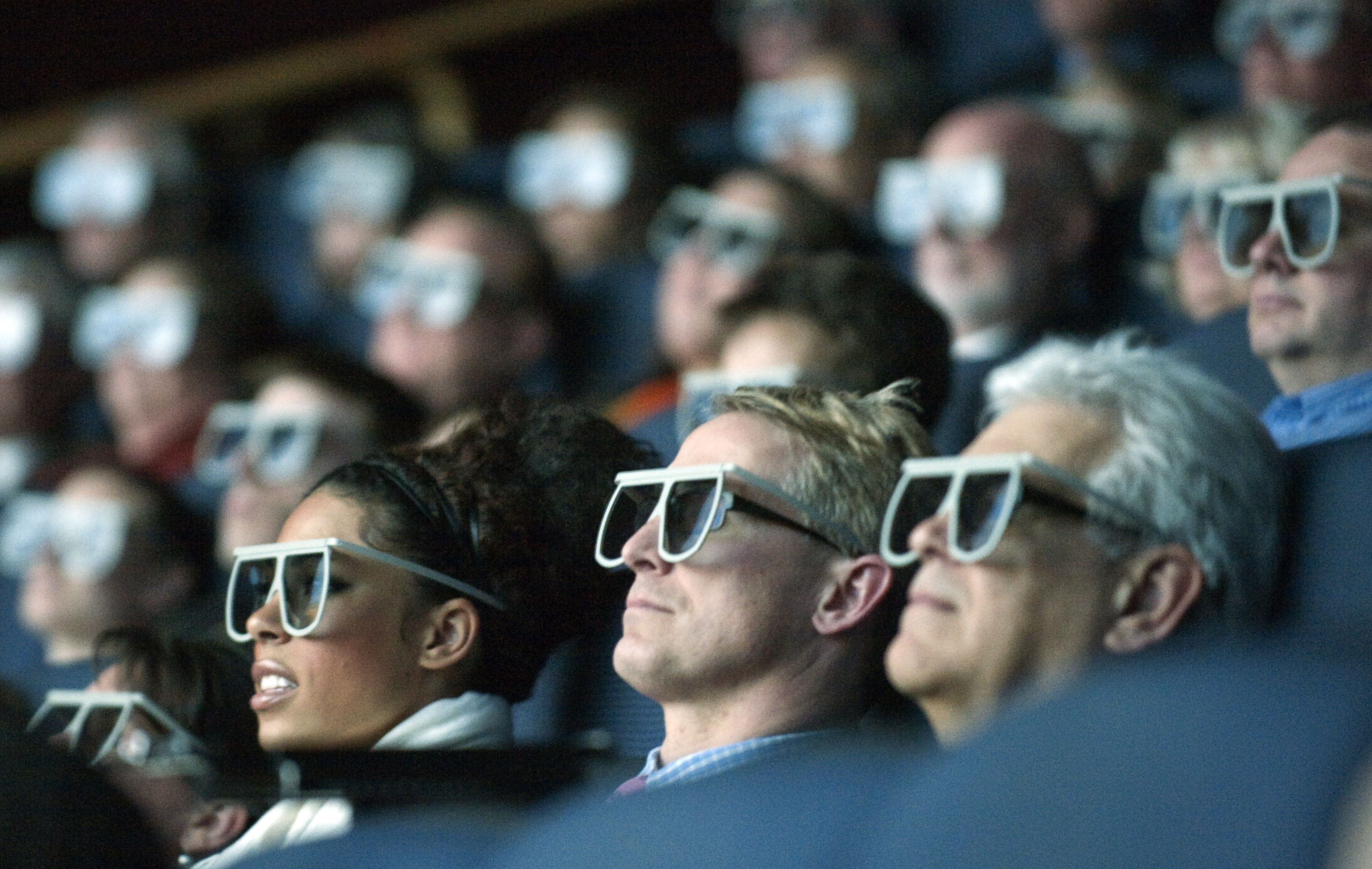
Art
Hubble’s observations inspire both art and science around the globe. Its images have been incorporated and reconstituted into artworks, but also displayed as art in its own right in museums. At New York City’s American Museum of Natural History, spectra of distant galaxies taken by Hubble were projected on the Hayden Sphere within the Rose Center for Earth and Space. Similar outdoor exhibits appeared in Baltimore, Maryland, and Venice, Italy.
Art exhibits of Hubble images have also been showcased at such venues as the Walters Art Museum in Baltimore, MD, and the Istituto Veneto di Scienze, Lettere ed Arti in Venice, Italy. The Artechhouse, a digital art gallery with locations that include Washington, DC and New York City, has produced a 3D immersive exhibit on the artistic expression of scientific discoveries, including those of Hubble.
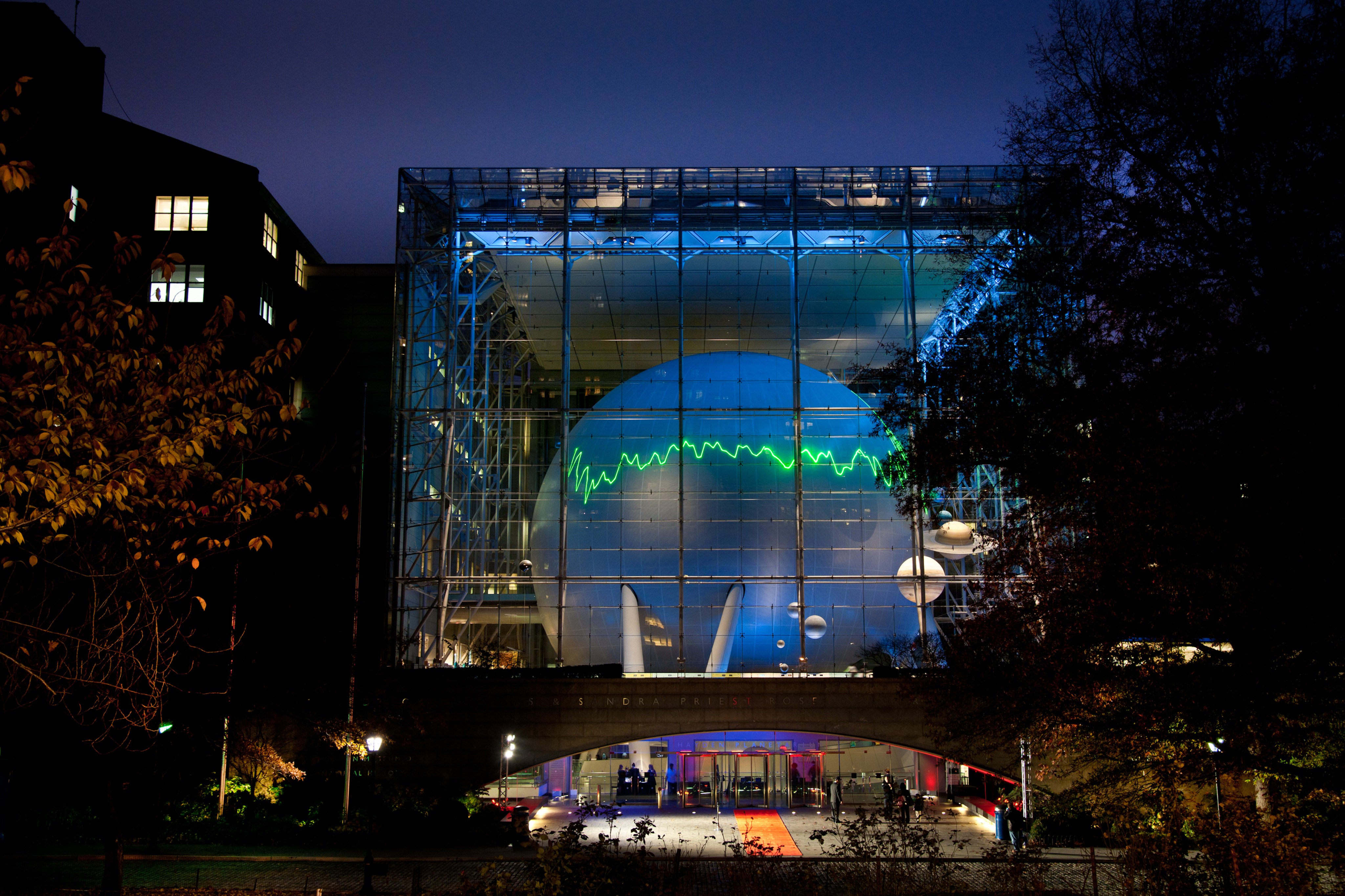
Music
Hubble has inspired musicians who base works on its images and the sense of wonder it evokes. Hubble has given rise to both individual songs and larger works, such as the symphonic "Deep Field," by Grammy-winning composer and conductor Eric Whitacre, performed by UK's Royal Philharmonic as well as by symphonies around the US. "The Hubble Cantata," a blend of imagery, art and narration by composer Paola Prestini has been performed at multiple venues, including the Kennedy Center in Washington DC, the BRIC Celebrate Brooklyn!, and the Ford Theatre in Los Angeles.
Composer Henry Dehlinger’s "Cosmic Cycles," a symphonic suite played live against the backdrop of NASA images including Hubble pictures, has been performed by the DC-area National Philharmonic.
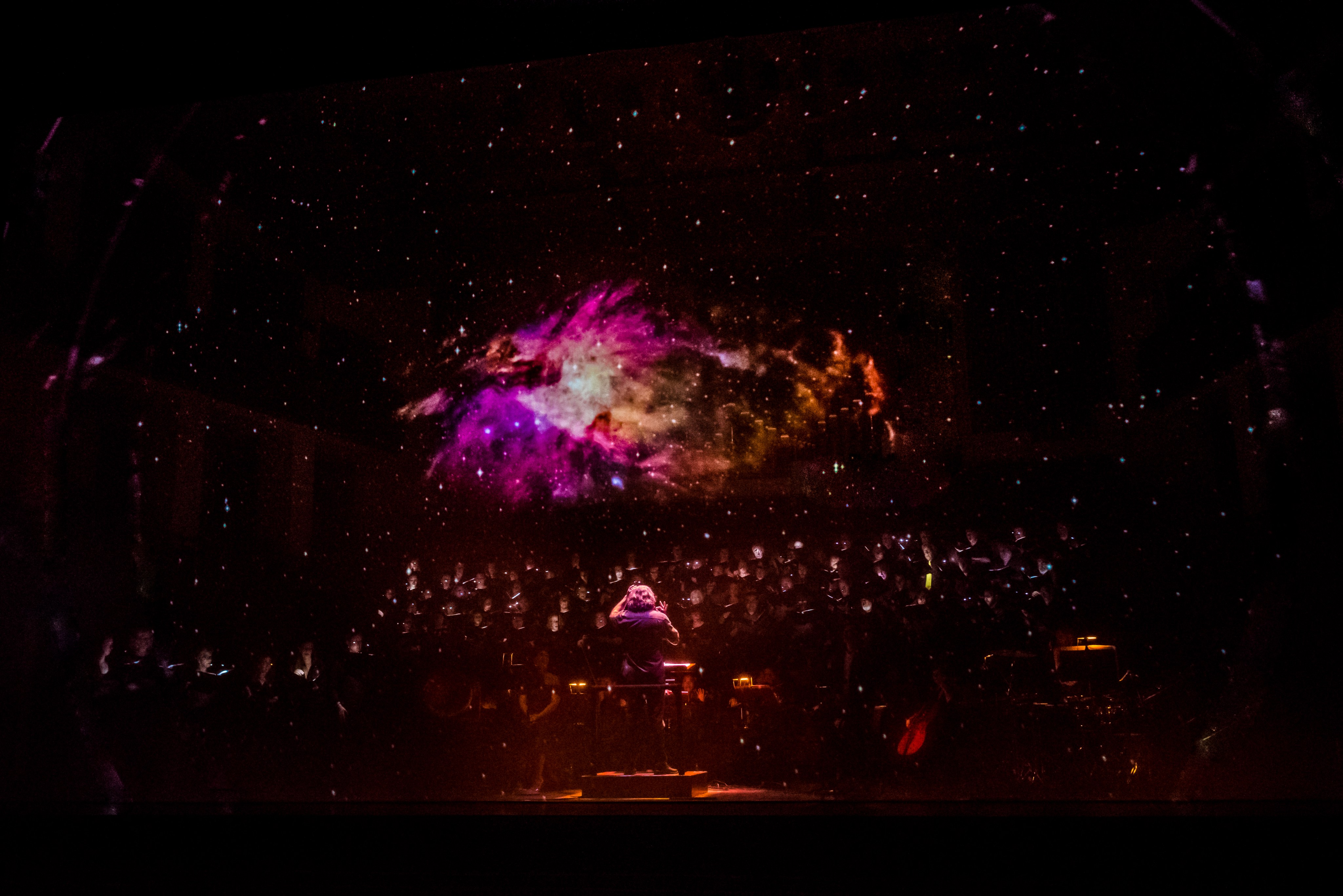
Magazines and Books
The Hubble observatory, its images, and its astronauts have frequently been featured on the covers of popular magazines including news periodicals (Time, Newsweek), technical publications and journals (National Geographic Magazine, Science, Nature, Discover), pop culture publications (Rolling Stone, Parade), and children's magazines like Boys Life. Hundreds of magazines from the United States and abroad have highlighted different aspects of the Hubble story featuring related images as the main cover.
Countless books have been written detailing the telescope’s discoveries, documenting its history, and providing photographic documentation of the people who make it happen. Often, coffee table books simply relay Hubble's images of the cosmos and their stunning beauty.
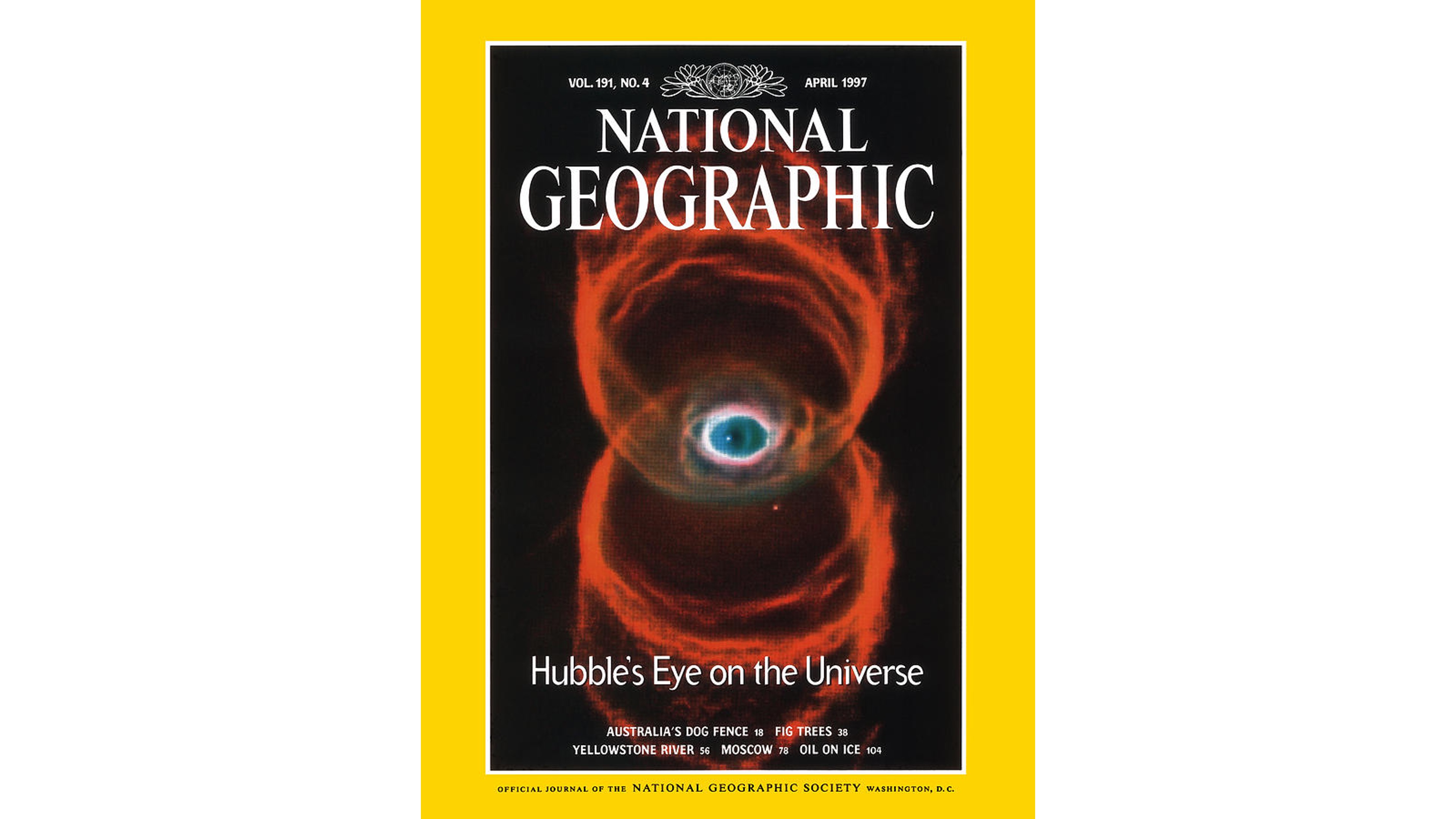
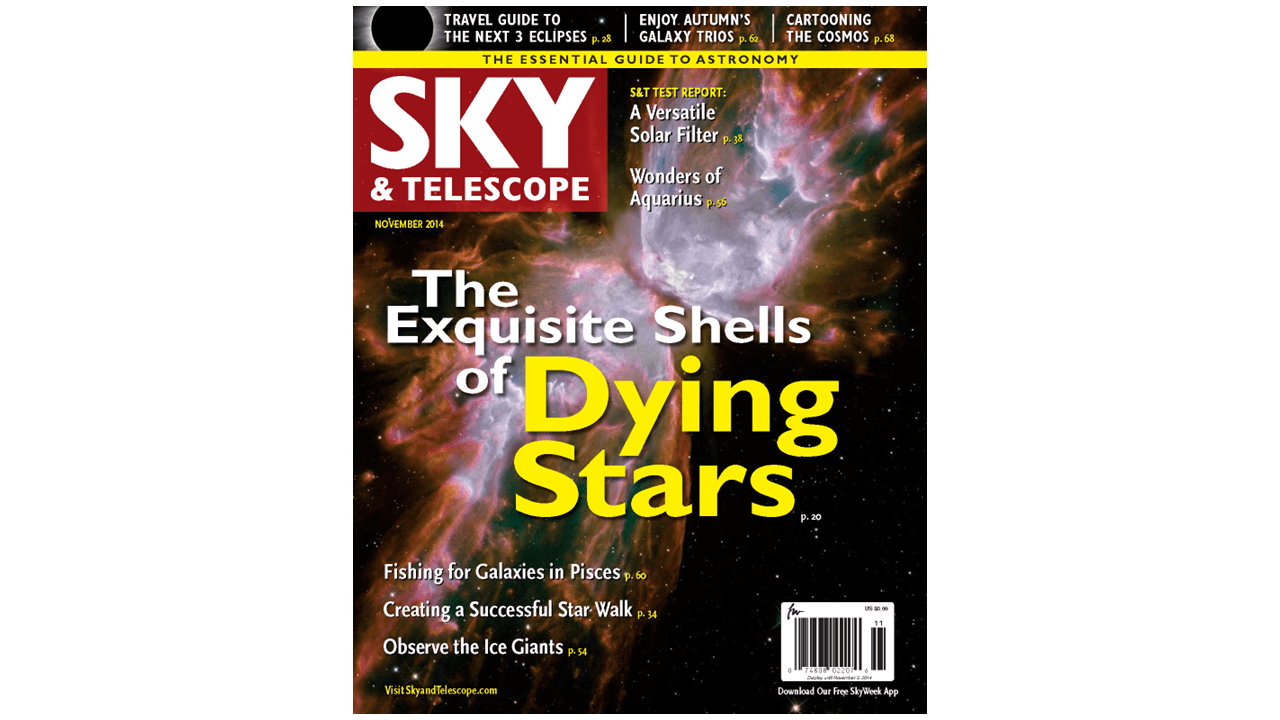
Around the US and Beyond
The instantly recognizable telescope has graced a state-themed US Mint collector’s coin and Hubble and its images have been featured on US postage stamps on multiple occasions. In fact, Hubble and Hubble images have been decorated stamps outside the US as well, in the Marshall Islands, the UK, Togo and Burundi.
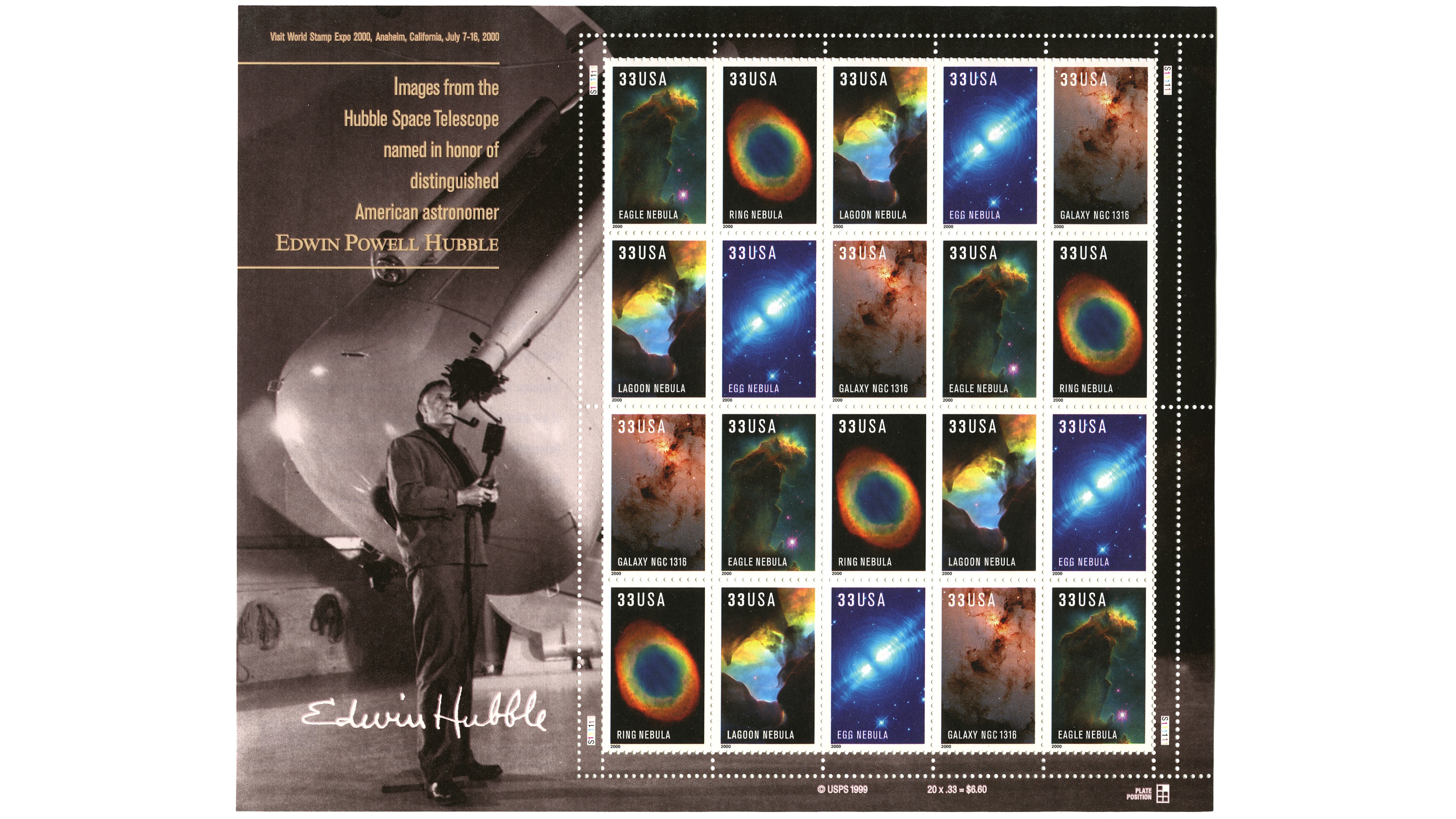
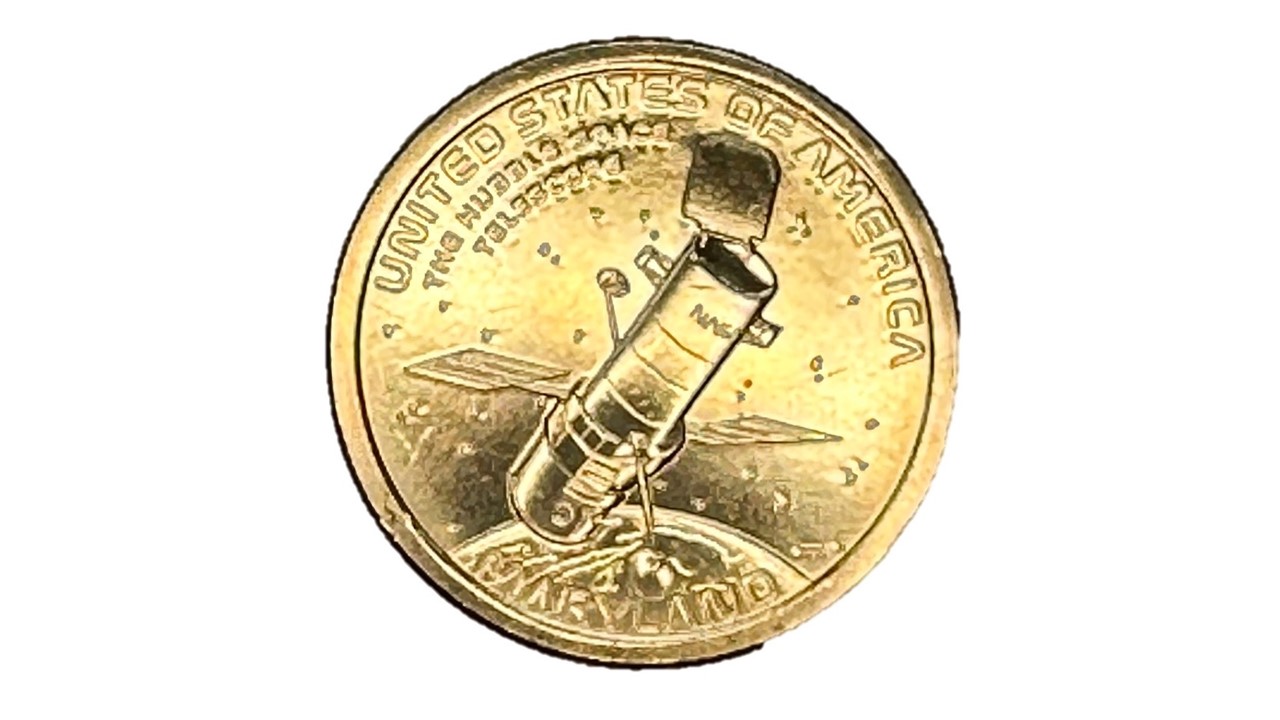
Clothing
Hubble images are for more than posters and prints. Popular art marketplace sites are filled with designs that use Hubble images – on shirts, dresses, socks, shoes, ties, and almost every kind of accessory.

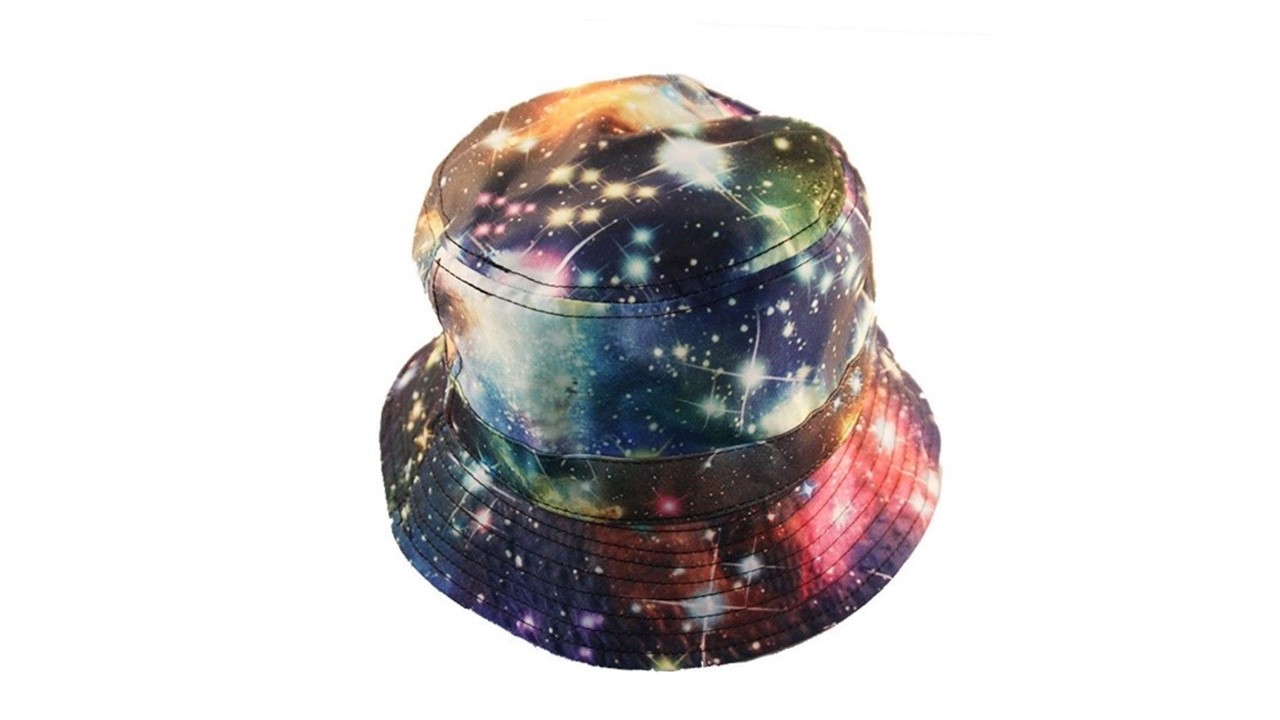
Unexpected Places
Hubble and its images appear in places where you wouldn’t expect them – from tattoos to stained glass windows in churches. A decades-long collaboration with LEGO has produced models of Hubble and a "Women of NASA" set that featured astronomer Nancy Grace Roman, known as the “Mother of Hubble.” From coffee mugs to the Google Doodle, Hubble pops up in surprising locations.
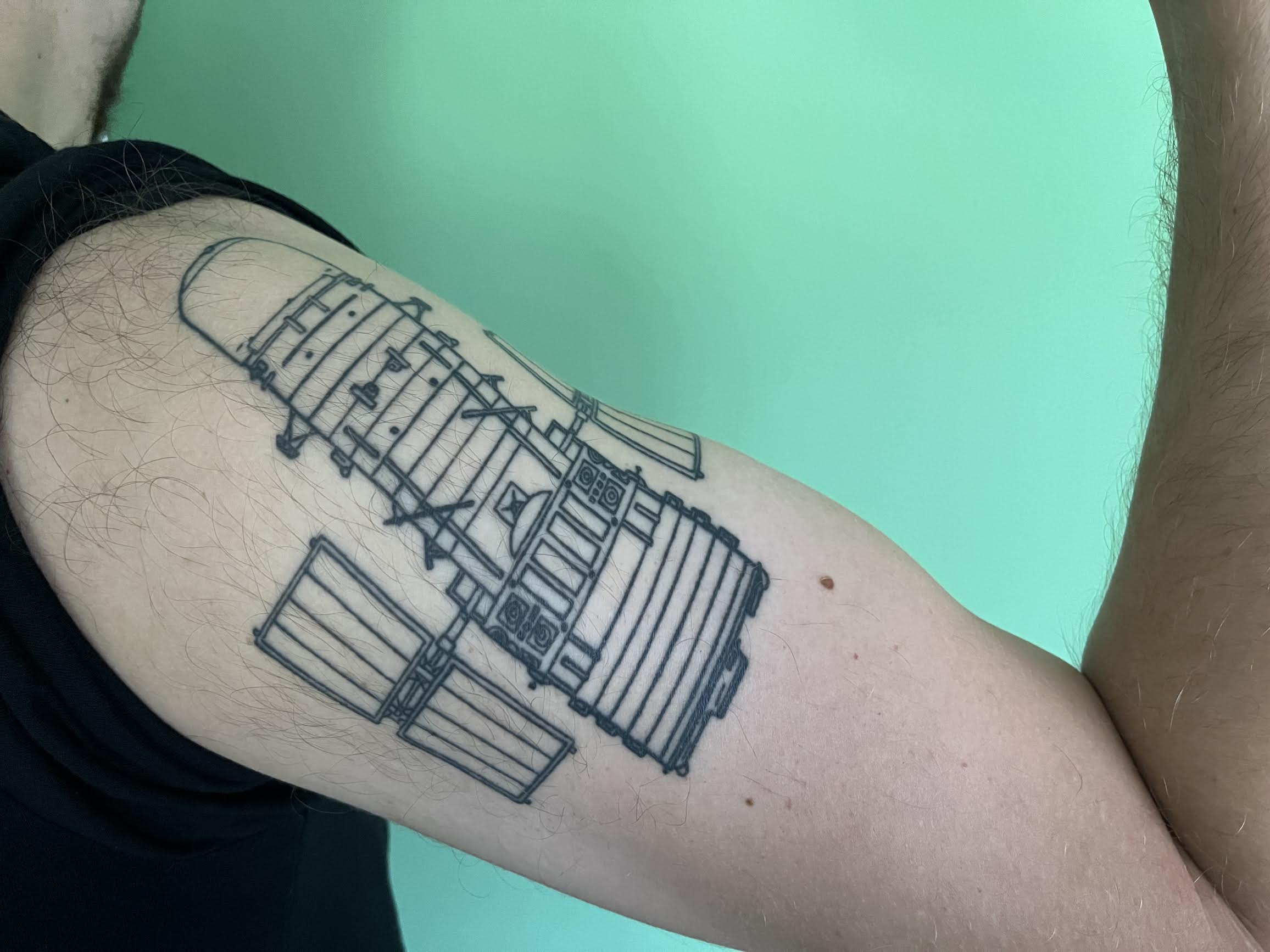
An Icon Among Icons
The popularity of Hubble extends to athletes, actors, royalty, musicians, politicians, astronomers, and astronauts. Celebrities have participated in campaigns to wish the telescope a happy birthday, kings and queens have received Hubble images as gifts, and athletes and entertainers have toured Hubble’s facilities. People feel a connection to Hubble no matter where life has taken them.
The evidence of Hubble's impact on the world – its art, its music, the very way we imagine the universe – is all around us. For more than 30 years, the telescope has been humanity's guide through the cosmos, revealing regions of the heavens in glorious detail. It has been an inspiration to millions, and one of its most lasting legacies may be the excitement and enthusiasm for space that it has kindled in the hearts of people who have grown up seeing Hubble images, the generations of dreamers whose eyes have been opened to the possibilities and promise of scientific exploration.
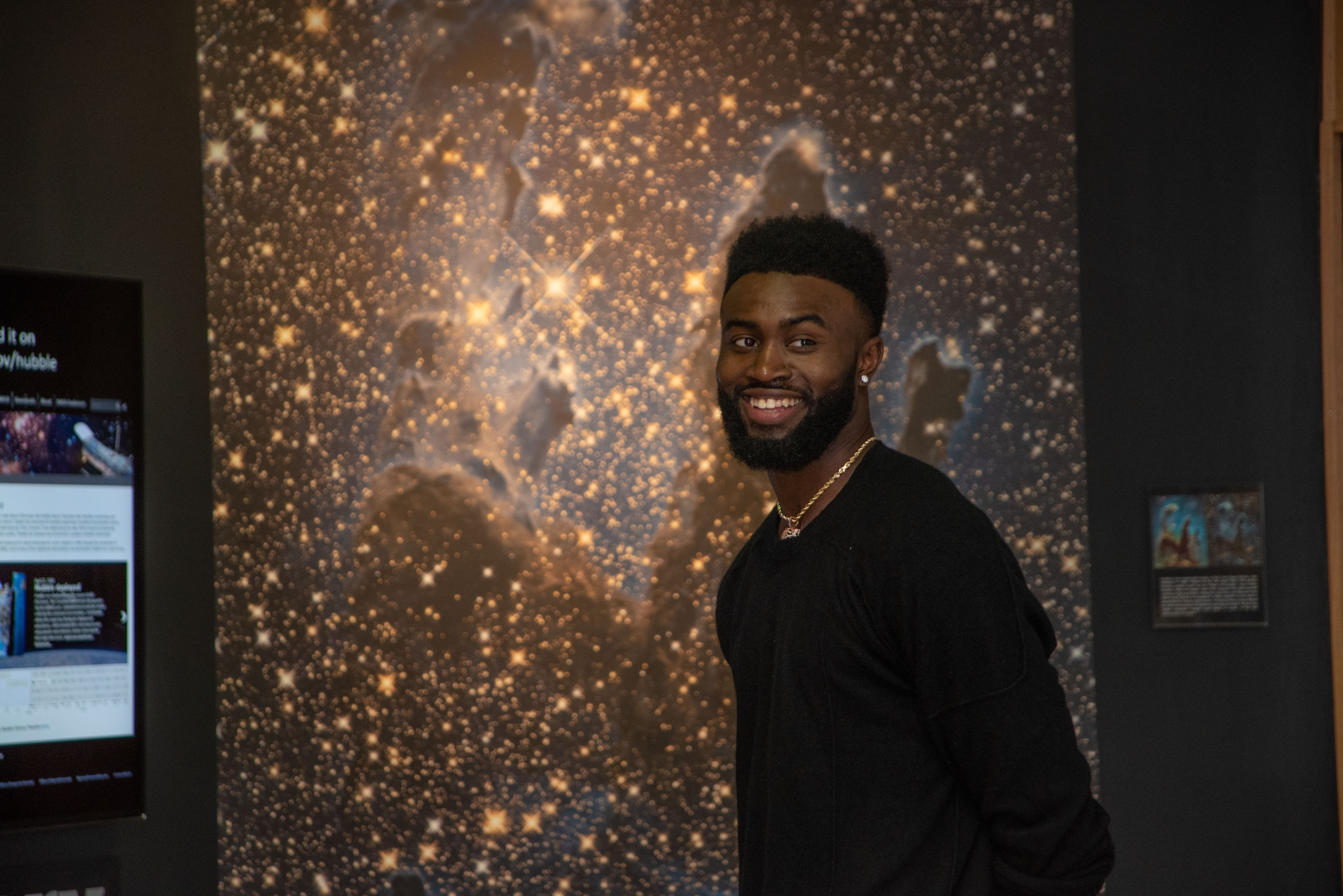
Cultural Impact
The Universe Brought to Earth
Hubble launched with a list of science goals that it would accomplish, one by one, but one of its greatest accomplishments was riveting the world's attention on astronomical discovery.
Hubble's stunning images paired with the rise of the internet turned the observatory into the first celebrity telescope. People around the globe felt a personal connection to Hubble.
Learn More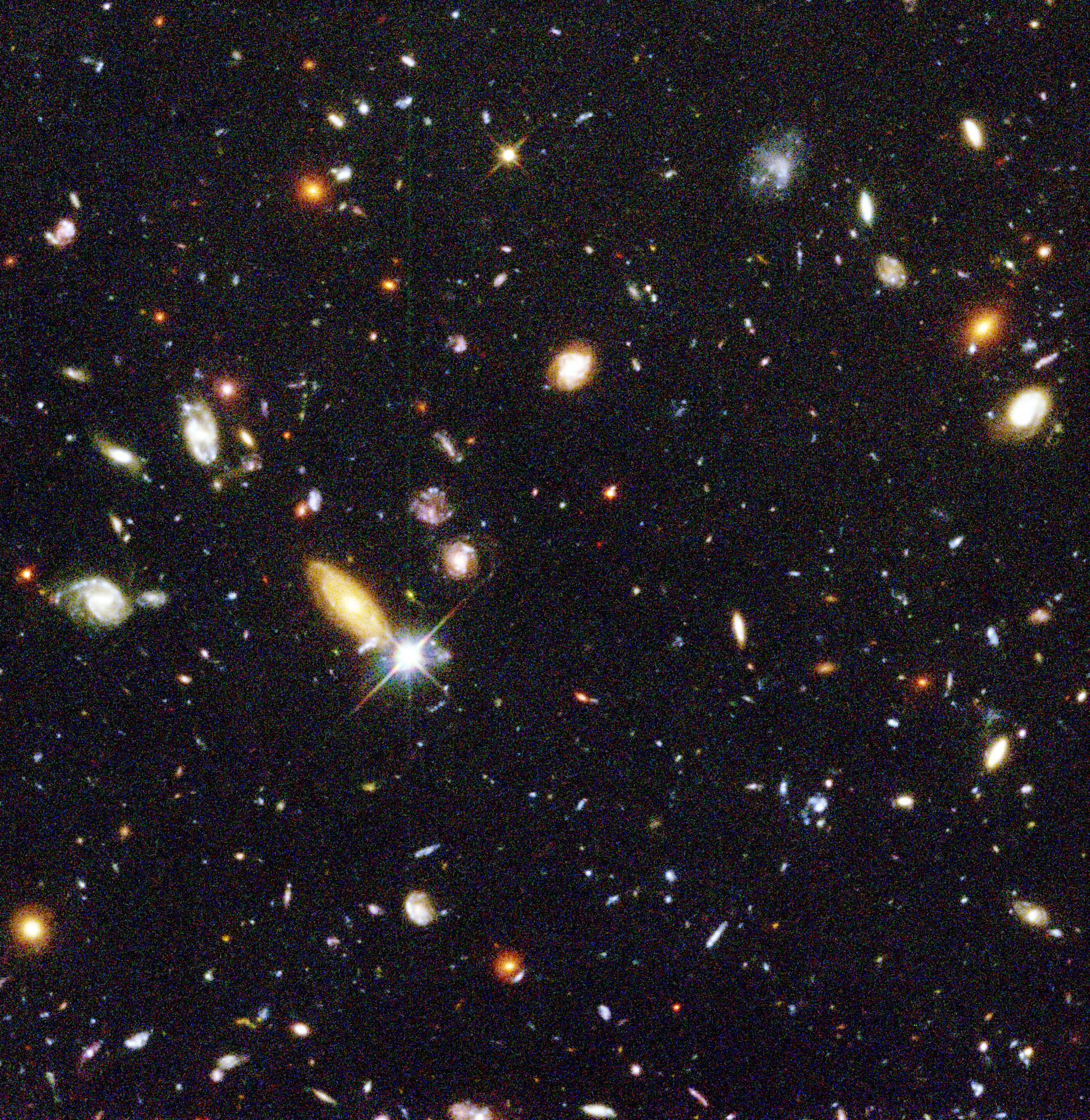
Cultural Impact
Comeback Story
Everyone loves an underdog – and Hubble's triumphant rise to become the world's most beloved telescope after its shaky beginning was a riveting transformation, complete a with high-stakes mission.
After Hubble's launch in 1990, it quickly became obvious that something was wrong. Hubble's primary mirror had been ground to the incorrect shape. The difference was less than the width of a human hair – but that was still enough to blur the telescope's images.
Learn More